




By Cait Crudden
In a stunning revelation, Environmental Protection Agency (EPA) Administrator Lee Zeldin (R-Shirley) announced the discovery of $20 billion parked at a financial institution by the Biden-Harris Administration. Zeldin, working in collaboration with the Department of Government Efficiency (DOGE), has called for the immediate termination of the financial agent agreement and the return of the entire fund balance to the United States Treasury to ensure proper oversight.
Parked funds can refer to monies left with an organization or person for a period of time, or to deceptive practices that include holding money before deciding on an investment strategy and transferring funds to an account with the expectation of obtaining a travel visa. Continued on page 5
By Matt Meduri
With the tumultuous 2024 cycle in the rearview, local parties and elected officials are gearing up for the 2025 off-year cycle, which will entail the elections of all eighteen County Legislators and various Town roles across Suffolk.
Smithtown particularly has the privilege of re-electing a town supervisor for another four-year term, as well as two seats on the Town Council, Superintendent of Highways, and Town Clerk, all of which serve in four-year capacities.
The Smithtown Republican Committee held its nominating convention at the Elks Lodge in Smithtown last Thursday evening.

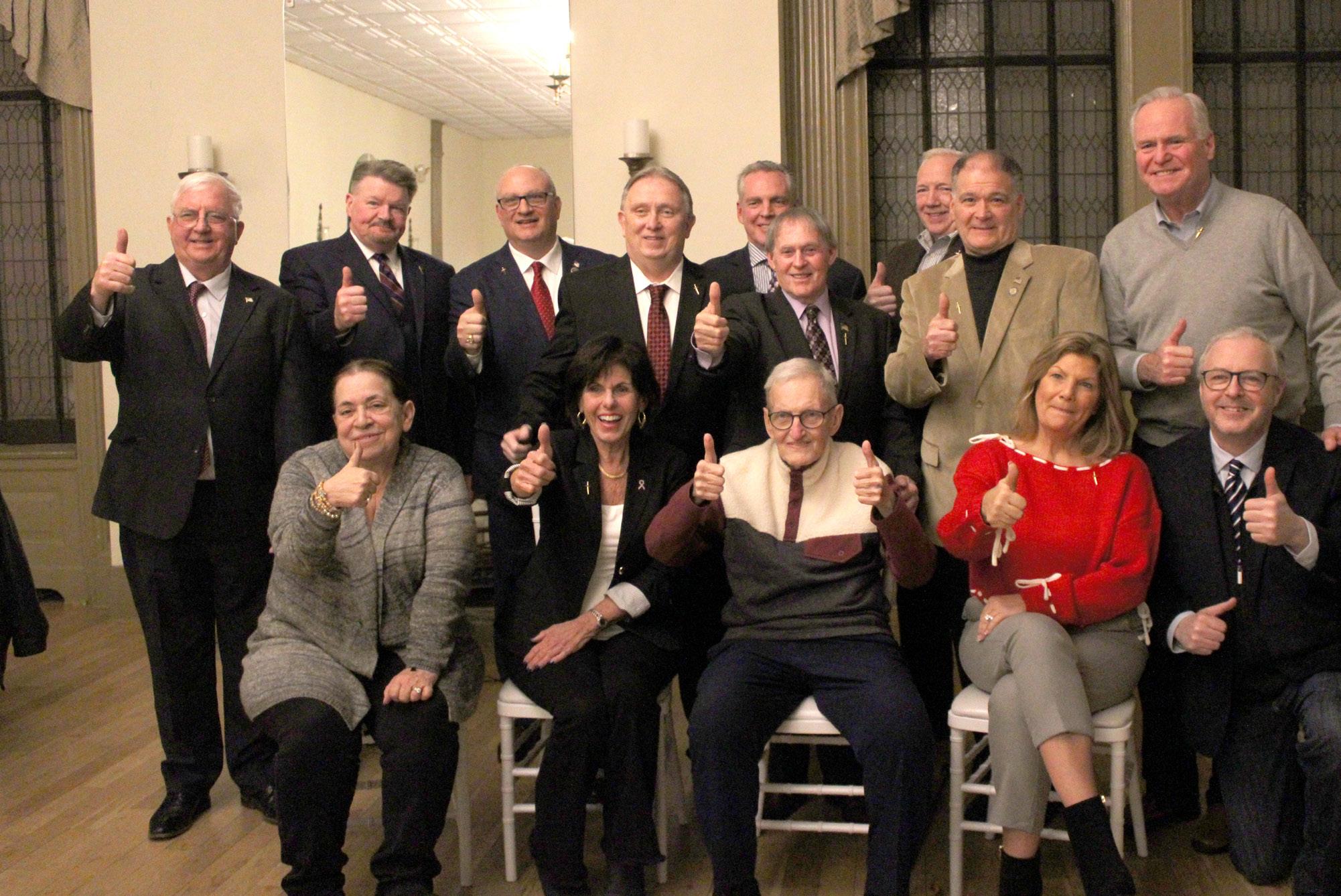
on page 10

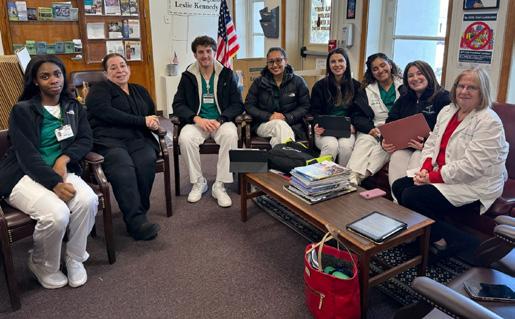






The Leo P. Ostebo Kings Park Heritage Museum invites you to enjoy a night of jazz music at 7:00p.m. on Friday, February 28, at the Kings Park Heritage Museum, 101 Church Street in Kings Park.
Coming out for the event from New York City is Perfect Pitch Project, which is modeled after the vision of Art Blakey’s Jazz Messengers. They are a core septet comprised of seasoned musicians who are composers, producers, and educators that have backed legendary artists such as Jimmy Cobb, Barry Harris, Benny Golson, Dizzy Gillespie, Clark Terry, Wynton Marsalis, Jon Faddis, Roy Hargrove, Herbie Hancock, Michael Brecker, Kenny G., Marcus Miller, Aretha Franklin, Gladys Knight, Patti Labelle, Natalie Cole, Shirley Caesar, and many others. They promise to create a unique musical experience, whether you are a true jazz aficionado or simply a lover of good music.
This event memorializes Kings Park’s Ranny Reeves, a much beloved jazz composer and a music teacher here for fifty years
The Kings Park Middle/High School Jazz Bands will also appear and will delight you with their enthusiasm. Come join us for this special night, which is part of the Museum’s Heritage Night Series. All ages are welcome!
Admission is free. Donations are gladly accepted.
The Leo P. Ostebo Kings Park Heritage Museum has been working to educate and enlighten students and the community about the long and storied history of Kings Park and its residents for over twenty-five years. It was founded by retired KPHS English/History teacher Leo P. Ostebo, along with dedicated members of the community, the school district and students, and it is the only school/communitymanaged museum in the United States. The museum has received many awards that attest to its commitment to the community, and we are thankful to all the volunteers and donors who have kept it going.
Please plan a visit soon or see our website: KPHeritageMuseum.net
Entered as a second class matter at the Post Office of Smithtown, NY, under act of December 28, 1879. Periodicals postage paid out of Smithtown, NY. This newspaper will not be liable for errors appearing in any advertisement beyond the cost of the space occupied by the error.
The opinions expressed in byline articles, letters and columns are those of the author and not necessarily those of Messenger Papers, Inc, its publishers or editors. Pictures submitted for publication remain property of the publisher.
Postmaster:
By Lindsay Press | Long Island Life and Politics
Joined by elected officials, real estate professionals and local residents, Congressman Nick LaLota (R-Amityville) held a press conference inside the Suffolk County Legislative Building in Hauppauge on January 30 calling to bring tax relief to Long Islanders by lifting the SALT (state and local taxes) cap. LaLota and those in attendance said the current $10,000 deduction cap needs to be raised.
“Why do Long Islanders so desperately need a higher cap on the state and local tax deduction?
Because it’s so expensive to live here,” said LaLota, adding that New York has the highest taxes in the nation and is “dead last” in affordability. “Our high taxes are driven by taxes and spending that come from Albany; it costs us more to live here.”
New York State Senator Mario Mattera (R-St. James) said homeowners can use the additional money from raising the SALT cap for home improvements or vacations.
“This is not about tax cuts for the wealthy, it’s about the people,” he said. “It’s about doing what’s right for all Long Islanders.”
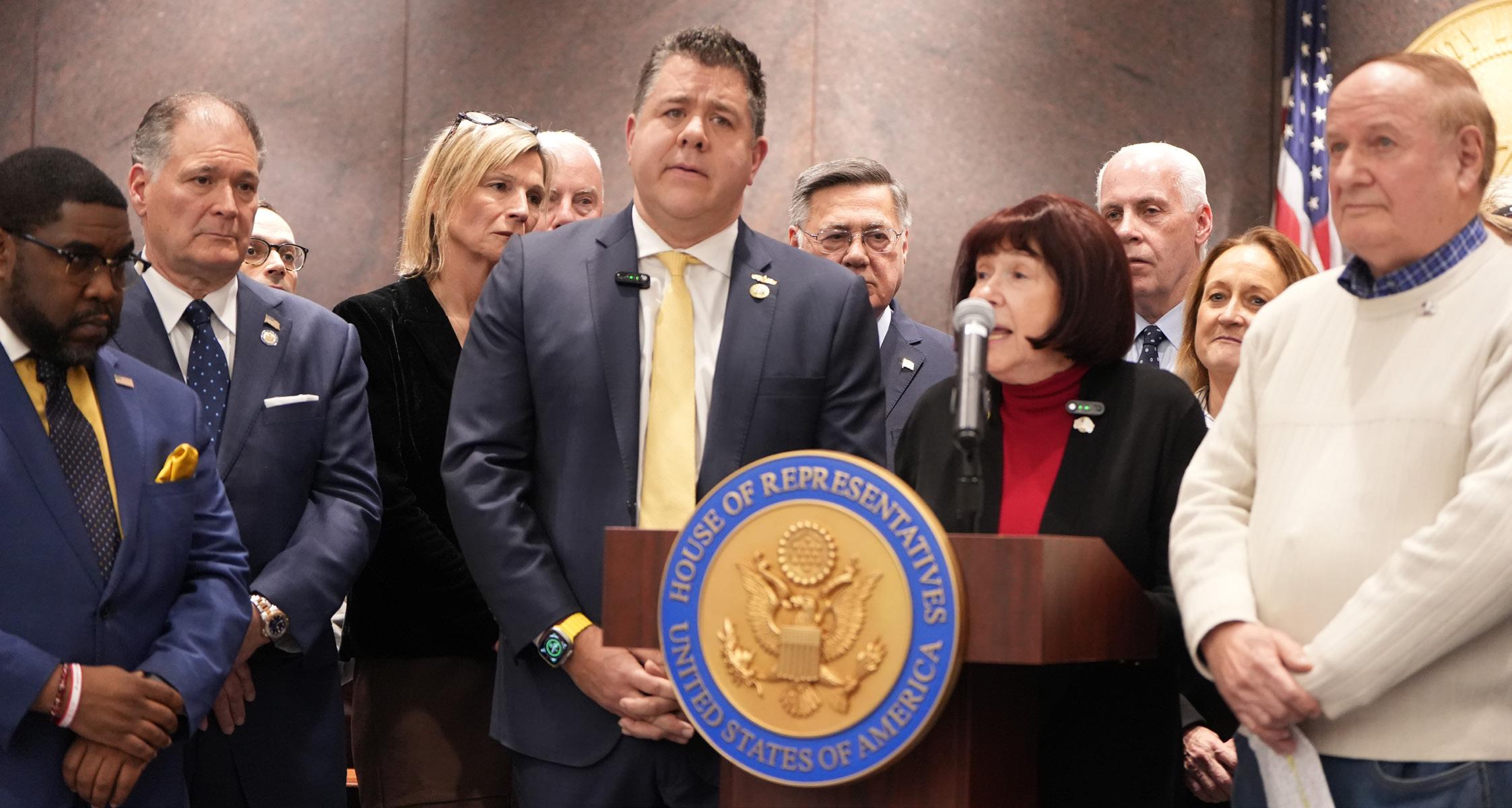
One of the subjects that was brought up was outmigration. Brookhaven Town Supervisor Dan Panico (R-Center Moriches) said that New York leads the nation in out-of-state migration. “Sixty percent left for economic reasons,” he said.
“Residents are not moving out of state because they no longer enjoy the beaches or the schools, but other states are considered to be less expensive to live in, and there may be more jobs available elsewhere,” added state Assemblywoman Jodi Giglio (R-Baiting Hollow).
“We should not be penalized because we have good schools, or we want to make investments in our parks.” added Suffolk Presiding Officer Kevin McCaffrey (R-Lindenhurst).
County Executive Ed Romaine (R-Center Moriches) emphasized that people should be able to deduct their state and local taxes and that there is “an unfair double taxation” on Suffolk County residents. Raising the SALT cap, he said, is “crucial to every person on Long Island.”
Marlo Paventi, the senior director of public policy and government affairs at the Long Island Board of Realtors, said the SALT cap just doesn’t hurt current homeowners, it hurts prospective homeowners as well.
“The dream of homeownership is slipping away,” Paventi said. She said she has watched “hardworking individuals looking for a place are met with higher prices and financial hurdles. … Every family deserves to buy a home.”
Smithtown residents Judy and Andrew Ratway also spoke about the struggles they faced under the SALT cap.
“Retired people can’t afford to live here,” Judy said, adding she does not have any retirement or pension plans. “The property and local taxes are making it unaffordable to live here and survive. Action must be taken to rescind this [cap]. End the insanity!”
“For years, we could write off taxes with no tax limit and itemize,” said Andrew, who has lived in Smithtown for forty-three years. “It seems like the state is being punished.”
LaLota said he is working with the “SALT bloc” in Congress — consisting of himself, Andrew Garbarino (R-Bayport), Mike Lawler (R, NY-17), Tom Kean Jr. (R, NJ-07) and Young Kim (R, CA-40) — to get SALT relief passed. LaLota promised those in attendance that he will not vote for any tax cut if it does not have SALT relief.
When asked how much the proposed cap will increase by, LaLota replied, “We will not announce a specific number. It could end any good faith we have [with other members of Congress].”
In the event that the SALT tax cap is raised, LaLota said, it will not go into effect until 2026.
Additional reporting by Hank Russell.
This article previously ran in Long Island Life and Politics.
Suffolk County Executive Ed Romaine (R-Center Moriches) announced the County is accepting applications for the Down Payment Assistance Program, which provides eligible first-time homebuyers up to $30,000 on a purchase of a singlefamily residence under the condition that they live in the home for at least 10 years. Applications are being accepted through April 1, 2025.
“We are committed to making Suffolk County more affordable by offering young professionals and first-time buyers the assistance to achieve their dreams of home ownership,” said Romaine. “By offering our residents further assistance and financial relief, we will be able to build a brighter future for our communities.”
The program, which was launched in 1993, provides eligible, first-time homebuyers with a conditional grant of up to $30,000 to use towards their down payment. The buyer is responsible for the balance of the down payment and all the closing costs. Last year, the program assisted in six closings, totaling $162,000 in assistance.
All applicants are required to attend housing counseling prior to submitting an application. The property must be a single-family residence with no rental units and may be a pre-existing or newly constructed single-family residence, condominium, co-operative apartment (Co-op) or manufactured home. The maximum appraised value cannot exceed $551,000.
• Must be a first-time homebuyer, defined by HUD as a person who has not owned a home during the three year period immediately prior to the purchase of a residence with HOME funding.
• Have an adjusted gross household income must be within the HUD guidelines (listed in the application).
• Occupy the property as their principal residence for 10 years.
• Attend homebuyer counseling at a HUD certified not-for-profit housing agency in person.
• Not have entered a Contract of Sale to purchase a home prior to being awarded a Purchaser Certificate from the Suffolk County Community Development Office.
• Have minimum of $3,000 of their own funds at the time of application in their savings, checking or investment accounts.
Residents are advised to visit SCDownpayment.com to download the application and guidelines as well as the program’s Quick Reference Guide in English and Spanish.
For questions or additional information, please contact the Suffolk County Office of Community Development at 631-853-5705 or community. development@suffolkcountyny.gov.
“Roughly twenty billion of your tax dollars were parked at an outside financial institution by the Biden EPA. This scheme was the first of its kind in EPA history and it was purposefully designed to obligate all of the money in a rush job with reduced oversight,” said Administrator Zeldin.
Zeldin further announced that he will be referring this matter to the Office of the Inspector General (OIG) and Congress. Additionally, the EPA will be working closely with the U.S. Department of Justice to ensure accountability for the funds and the decisions that led to their mismanagement.
As part of his commitment to responsible financial stewardship, Administrator Zeldin reaffirmed his pledge to scrutinize every dollar spent at the EPA, both during his tenure and under the previous administration.
“One of my very top priorities at EPA is to be an excellent steward of your hard-earned tax dollars. There will be zero tolerance of any waste and abuse,” continued Zeldin. “We will review every penny that has gone out the door. The days of irresponsibly shoveling boat loads of cash to far-left, activist groups in the name of environmental justice and climate equity are over.”
Two months ago, a video circulated on social media featuring a Biden-era EPA political appointee discussing the urgency of “tossing gold bars off the Titanic,” a phrase used to describe the deliberate rush to allocate billions of tax dollars before Inauguration Day. Zeldin’s discovery of the $20 billion aligns with concerns about reckless spending practices that prioritized speed instead of oversight.
In addition to uncovering the parked funds, Administrator Zeldin has canceled nine contracts related to DEI (Diversity, Equity, and Inclusion), environmental justice, and other initiatives deemed non-essential, saving taxpayers nearly $60 million.
“The American people deserve accountability and responsible stewardship of their hard-earned tax dollars. At President Donald Trump’s (R-FL) direction, EPA, with the assistance of DOGE, are reviewing every dollar spent. There will be zero tolerance for waste and abuse, and by canceling these contracts, we are delivering nearly $60 million in immediate savings to the American people,” stated Administrator Zeldin.
Zeldin outlined that the canceled contracts, totaling $59,776,673.70, included funding for DEI training, the expansion of environmental justice initiatives through the America’s Children and the Environment Program, and the hiring of contractors to advance DEI objectives. Additional savings were accrued through the cancellation of outside consultants hired to organize office-wide retreats and perform contracted work that could be handled internally.
The EPA is working to implement President Trump’s executive orders, including the “Ending Radical and Wasteful Government DEI Programs and Preferencing.” The agency is aligning its policies with new administration priorities, focusing on environmental policies that enhance energy independence, streamline permitting processes, and bolster American industries.
In addition, Administrator Zeldin identified and terminated a $50 million environmental justice grant allocated under the Biden Administration to the Climate Justice Alliance, which believes “climate justice travels through a free Palestine.” He also announced that the agency would not be renewing nearly half a million dollars in media subscriptions to Politico and its subsidiaries, signaling a shift in the agency’s fiscal priorities.
With the discovery of the $20 billion in parked funds, Administrator Zeldin emphasized the need for strict oversight and transparency in all EPA financial dealings. By terminating the financial agent agreement and demanding the immediate return of the funds, Zeldin is taking decisive action to prevent further misuse of taxpayer dollars.
“The American public spoke loud and clear last November. The EPA will deliver on President Trump’s priorities, ensuring taxpayer dollars go towards our core mission of protecting human health and the environment, as well as unleashing energy dominance, implementing permitting reform, making America the AI capital of the world, and bringing back the American auto industry,” concluded Administrator Zeldin.
As the EPA continues to conduct a thorough review of past expenditures, further financial revelations may come to light. The agency’s partnership with the OIG, Congress, and the Department of Justice underscores its commitment to ensuring taxpayer dollars are used effectively and responsibly.

All are Welcome- Join us for Lake Ronkonkoma History as we move forward with the Legend Project of our Lake

February 20, 2025
Double D Bar Ranch in Manorville was purchased in September 1997 to act as a home for abandoned and neglected farm animals. Since then, the purported refuge has taken in an array of farm animals, including horses, goats, sheep, a pig, rabbits, chickens, turkeys, assorted waterfowl, several deer, and even a pig.
The facility is now subject to investigation of animal rights abuse and neglect at the hands of the proprietors.
The latest investigation by District Attorney Ray Tierney (R) into the Double D Bar Ranch animal “sanctuary” in Manorville is just the latest installment of how much some people are lacking in compassion and empathy.
Double D Bar Ranch, Inc., now faces 112 counts of Animal Neglect. Firstly, we’ll add the disclaimer that these are merely allegations that will pan out in court in due time.
But it shouldn’t discourage the opportunity to levy the opinion that while animals are not “human,” they’re also not “subhuman.” And just because they’re not quite human doesn’t mean they’re required to be treated as significantly less.
Animals are unequivocally not human; this is obvious. But does that mean we are permitted to treat them as something less than an inanimate object?
We understand the great range of products that animals can provide us, making them somewhat dispensable, but not prohibitively so.
Animals not only look to humans for care and safety in many circumstances, but countless videos have documented their uncanny ability to silently communicate with people, often asking for help for rescuing young or for freedom from thick brush, a fence, etc.
Our pets are even more equipped to not only communicate with us in
similar situations, but they can detect our energy, mood, and emotions and feed off of them or offer their own forms of care and safety to us.
It’s our mandate to care for animals and treat them humanely, even in light of the variety of animal products that benefit us regularly. To abuse and neglect them, assuming they have no emotions, don’t experience stress, fear, or loneliness, and to cast them aside completely is completely selfish and cruel behavior.
The issue, we find, has reached a new height in 2025, as “pet culture” has truly taken off due to social media. Pets are regarded now more than ever, perhaps, as official family members, which, in turn, strengthens the human-animal relationship and understanding.
So, if your pet dog isn’t on the chopping block for abuse or neglect, what makes a duck, a goat, or a sheep any more deserving?
The people of Double D Bar Ranch, the Holtsville Ecology Site, and other similar sites of alleged abuse - again, if allegations are proven true - are in serious need of soul-searching. The investigations are completely warranted based on the allegations and that further reform might be necessary where applicable. Legal reform might prove tricky in some circumstances, as an animal can’t exactly testify against an abuser in court, but sting operations and undercover “shelter volunteers” could be a creative workaround, if the law permits.
We commend Suffolk County, D.A. Tierney, the Town of Brookhaven, and the several other animal welfare organizations who were crucial in opening this investigation.
Allegations are just those and we recognize the unproven nature of the case(s) so far, but the concept of the title stands:
Animals might not be human, but does that mean they deserve to be treated as significantly less?
In a fast-paced, high-pressure society in which most people face little to no margin of error in terms of time, finance, or vitality, it tracks that we innately expect everything to move along as quickly. Waiting to save enough money for a downpayment on a car or a house; waiting for the next break for a quick weekend away; waiting for a promotion or step up in a career can all be agonizing. The frustration is only enhanced by a person’s ability to see a straight path forward, but receives roadblock after roadblock. It’s comparable to developing “road rage” while pushing a shopping cart through a crowded grocery store. The final aisle is almost in sight, but the aisles are blocked by haphazardly stowed carts or incredibly slowmoving customers.
Even then, the breakthrough might not be a sudden parting of the Red Sea, but perhaps someone awkwardly shuffling their cart against the tiles to perhaps make a slight opening for us.
While “patience is a virtue,” waiting can be, and is often, excruciating.
But the value of waiting - especially in the midst of such a fast-paced, high-pressure society in which many face little to no margin for error in multiple aspects of their lives - has become a lost art. And while the wait for big-picture items often cannot be scaled down - understandably so - waiting is an art that is built incrementally.
The impact of our modern society is evident practically anywhere. A tame example is entertainment. The world would eagerly anticipate a new movie arriving in theaters, often with significant ad campaigns on major networks. The wait for a VHS or DVD copy often took months after the film’s pull from theaters, making it only the more valuable to find a copy in a store, often chock-full of specialties, bonus features, and the like. Moreover, the physical copy promoted ownership rather than subscription-based services.
tuned into the same cultural touchstone. Anxiously rushing home from work, gathering around the television, jumping over the back of the couch as the commercials ended is nowhere near as common as it used to be.
But we all eagerly awaited a new show premiere, an episode of our favorite sitcom, or an exhilarating series finale.
Now, an infinite amount of content is eternally at our fingertips and often with little waiting involved, especially if a show isn’t actively being produced.

These are just tiny examples of how a small, seemingly innocuous, and often subconscious, practice can result in an overall larger impact. With no waiting on the little things as a de facto training ground, the art of waiting is lost in the bigger picture.
We’re not comparing waiting for ample savings to buy a house to awaiting a DVD release, but we believe that correlation equals causation, especially in light of just how urgent and instant our world has become.
Instant online shopping has made lines in department stores all the more unbearable.
Ubiquitous information has made awaiting, or even searching for, additional details almost obsolete.
The mindless scrolling on social media and the seemingly persistent haze of boredom have made the act of passing time largely unproductive and unstimulating.
All while the world around us continues to proceed at warp speed, making the traffic seem downright unreasonable.
And yet, some can’t help themselves, constantly ravenous for the next installment, the next epoch, the next form of entertainment or social media post.
Now, films have relatively shorter runs in cinemas and DVD copies are typically on shelves before the movie is out of theaters. The timelapse over an innocuous tenet of a lifestyle of yesteryear was enough to not only emphasize the concept of “absence makes the heart grow fonder,” but it also made us able to concentrate on other items worth awaiting, even if we weren’t ever aware of it.
The same goes for television, specifically how the world used to be
Perhaps the waiting we do along the way isn’t that of a distressed shopper trying to deftly maneuver a shopping cart through a crowded aisle. Maybe the waiting we do along the way is that of the parked shopper who tries to awkwardly drag the cart out of the way while we await our own next moves.
The art of waiting has been lost in a world - and particularly a generation - where the discipline hasn’t been abolished per se, but has been actively discouraged through our own collective lifestyle.
Published by Messenger Papers, Inc.
By Assembly Minority Leader Will Barclay
Citizen participation in governance is the bedrock of U.S. democracy. Americans have a fundamental right to choose who represents them; this principle is one of the chief reasons our nation has evolved into the global economic and military leader it is today. Recent attempts by New York City liberals to undermine this principle by extending voting rights to non-citizens have been rightfully shut down by the courts. It is extremely disappointing to see yet another desperate attempt to undermine our democracy for political purposes play out in the state Court of Appeals.
In 2022, New York City’s Democratic-led council approved a measure allowing non-citizens the right to vote in municipal elections. Fortunately, Republican opposition helped fuel the law’s defeat, but now Democrats are fighting to reverse that ruling. The measure is a terrible idea in practice and clearly violates the New York State Constitution, as noted by a mid-level court. Dragging this legal battle out further wastes taxpayer resources and is clear evidence advocates of this scheme have chosen partisan politics over sound electoral policy.
Proponents of non-citizen voting have tried to equate one month of living in New York state with full citizenship—thirty days of residency is all it takes to vote under the law as passed. This is an affront to immigrants who have taken the important step to formalize their citizenship, pledge their allegiance to the U.S., and commit to civic participation in our state and nation. Voting laws like the one proposed in New York City diminish and water down the effectiveness of our democratic republic and have no place in our state. Case in point, the potential for voter fraud becomes much greater when local races featuring non-citizen voting are printed on the same ballots as state and federal races;

Dear Editor,
it would be nearly impossible to know which ballots to disqualify under those circumstances.
Being a citizen of the U.S. carries inherent meaning and value, and becoming a citizen is an incredible privilege. For those who want to become a citizen of the U.S., I offer my support and admiration. The pathway for an immigrant to gain citizenship is not always easy, but there are important reasons for instituting formal requirements. Ignoring those requirements is both disrespectful and dangerous.
The Assembly Minority Conference will continue to stand in opposition to any law that weakens our democracy. I truly hope the state Court of Appeals swiftly ends this waste of time, energy and legal resources and strikes down this assault on U.S. election law once and for all; anything less would be an insult to our state and our nation.
If you have any questions or comments on this or any other state issue, or if you would like to be added to my mailing list or receive my newsletter, please contact my office. My office can be reached by mail at 19 Canalview Mall, Fulton, NY 13069 and by email at barclayw@nyassembly. gov. You may also find me, Assembly Minority Leader Will Barclay, on Facebook or Twitter at @WillABarclay.
Assemblyman Will Barclay (R-Pulaski) is the Assembly Minority Leader and has represented the 120th Assembly District since 2003. The 120th District contains most of Oswego County and parts of Jefferson and Onondaga counties.

February is National Cancer Prevention Month. Did you know that almost half of all cancer cases are preventable? The Cancer Prevention in Action program at Stony Brook Cancer Center wants to share how you can prevent cancer for yourself and your loved ones.
Vaccinate: The HPV (Human Papillomavirus) vaccine can reduce your child’s risk of six types of cancer later in life. HPV is a common virus, responsible for about 36,000 cancer cases annually in the U.S. These cancers include cervical, vaginal, vulvar, penile, anal, and oropharyngealcancers of the mouth and throat. The HPV vaccine can prevent 90% of these cancers by preventing the virus that causes them. If your child is nine or older, talk to your child’s healthcare provider to schedule. For those who were not vaccinated in childhood, you can still get your HPV vaccine through age 45. Talk to your healthcare provider about your vaccination needs, or get vaccinated at your local pharmacy if you are 18 or older.
Get screened: Cancers such as breast, cervical, and colorectal cancers can be detected early through screening tests. These three cancers account for one out of four of all cancer deaths in New York State. Finding cancers early can save lives, as treatment is more likely to be successful. Some cancer screenings can even identify and remove pre-cancerous cells before they develop into full-blown cancer. Examples of cancer screenings are mammograms, pap smears, fecal tests and colonoscopies. Talk to your healthcare provider about what screenings are recommended for your age and risk factors, and how often you should be screened.
Sun safely: Skin cancer is the most common form of cancer in the United States. Overexposure to ultraviolet radiation from the sun and indoor tanning beds is the primary cause of all skin cancers. The use of indoor tanning beds has been linked to increased rates of melanoma, the deadliest form of skin cancer, and should be avoided. Protecting your skin from the sun when outdoors, even in the winter months, can also help reduce your skin cancer risk. Precautions to take include wearing sunscreen daily, reapplying every two hours when outdoors, covering up with wide-brimmed hats, UV sunglasses, long-sleeved clothing, and seeking shade, especially during the midday sun are all proven ways to reduce risks.
Live healthy: Having a healthy lifestyle is a way to lower your cancer risk. Quitting smoking and vaping, reducing alcohol intake, maintaining a healthy body weight, and staying physically active are all forms of cancer prevention. Health coverage enrollment has also been shown to reduce cancer risk by improving your access to preventive care.
In New York State, nearly one in four deaths is due to cancer. The CPiA program at Stony Brook Cancer Center is working to change this by educating the community on cancer prevention, mobilizing communities to take action against cancer, and supporting local organizations, businesses, and municipalities to implement policies that prevent cancer.

The best time to take action against cancer is before it starts
To learn more cancer prevention or to get involved with CPiA at Stony Brook Cancer Center, go to www.takeactionagainstcancer.com or contact us at 631-444-4263 or at COE@stonybrookmedicine.edu.
CPiA is supported with funds from Health Research, Inc. and New York State.
By Hank Russell | Long Island Life and Politics
The state Division of Budget (DOB) with the Comptroller’s Office reported an anticipated budget gap of $27.3 billion through Fiscal Year 2028-29. The agency also predicted that state spending will continue to outpace revenues, thereby widening that gap over the next three years, and federal funding may not be there in the future.
According to the DOB, spending in this year’s proposed budget is projected to be $252 billion, which is 3.6% greater than the previous year’s updated projections of $243.4 billion. The budget gap will come through the 2026-27 and 2028-29 projected gaps, when the 5.3% increase in General Fund revenues during that time will be wiped out by a predicted 24.9% rise in spending.
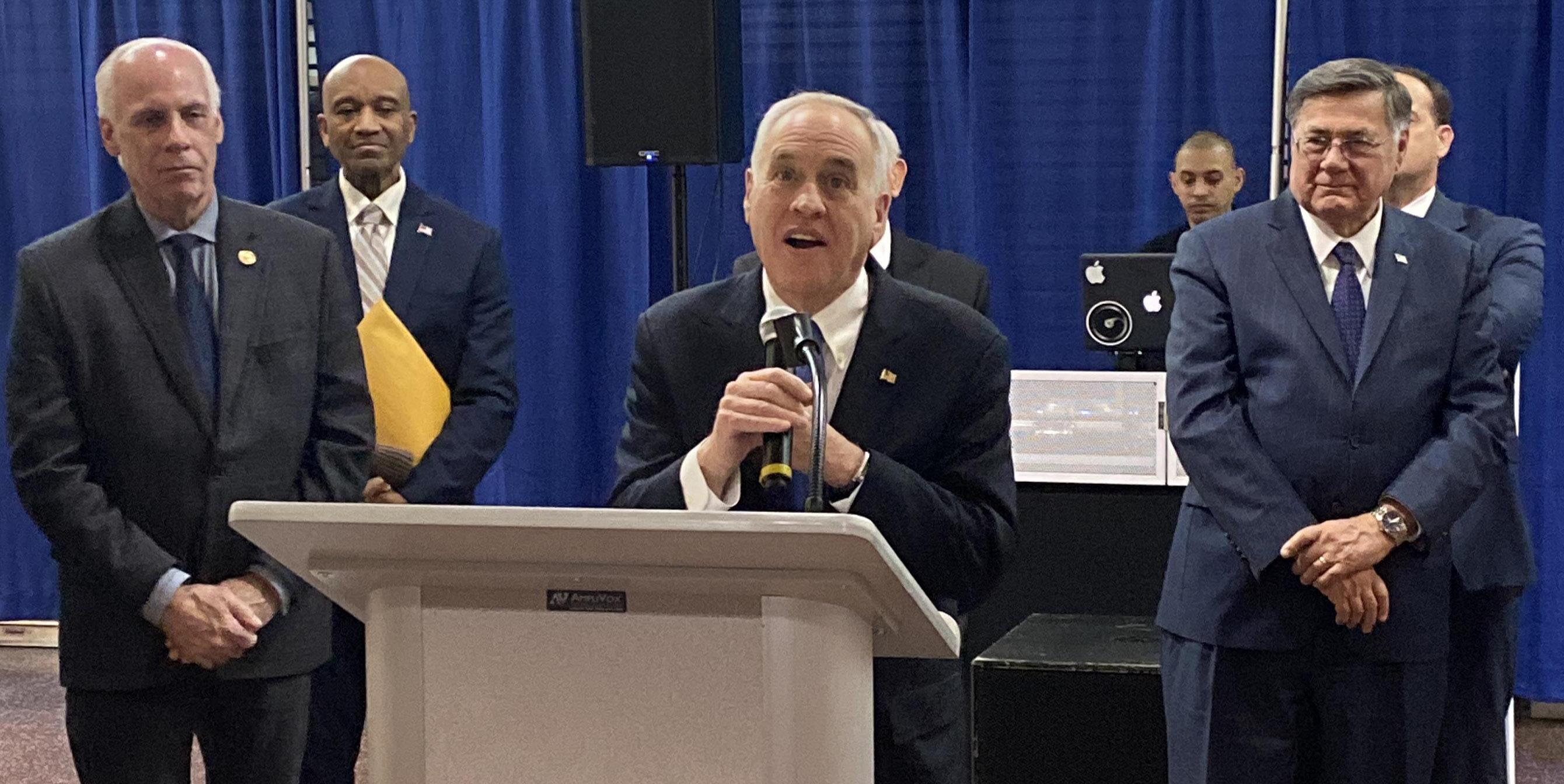
The state will receive a projected $93.1 billion in federal funding for the 2025-26 fiscal year, the DOB said. (Federal funding is the largest source of revenue.) More than 60% ($57.6 billion) is expected to go to Medicaid; by 2028-29, that figure will be $58.1 billion.
In addition, for 2025-26, $13.2 billion will go toward the Essential Plan, a federally subsidized health insurance program authorized under the Affordable Care Act and $70.9 billion will go to provide healthcare for 8.5 million New Yorkers.
“The state has struggled to contain Medicaid costs,” the DOB stated. “A significant change in federal policy or an economic shock might result in having to make decisions quickly relating to healthcare funding. Making prudent financial decisions now and putting Medicaid spending growth on a more sustainable path is in the best interests
up from $16.34 billion to $18.26 billion.
of all New Yorkers.”
Aside from healthcare, federal aid provides funding for school meals, K-12 education, clean water and drinking water, public assistance (e.g., Temporary Assistance for Needy Families and Home Energy Assistance Program), child and foster care, and grants for transportation and roadways.
Social welfare spending will decrease from $5.28 billion in 2025-26 to $5.15 billion in 2028-29. Education spending will remain the same at $4.39 billion. Transportation will increase during this time period, from $2.84 billion to $2.96 billion. Lastly, spending on health services will shoot
The biggest risk the state faces, the DOB said, are the executive orders signed by President Donald Trump (R-FL) — from federal funding to tariffs to tax policy. “In the event of federal cuts, the state may choose to cut programs or services or to increase state-sourced funding to maintain services; however, it does not have the taxing capacity to replace federal spending in total, especially in health and social services,” the DOB stated. “Furthermore, short-term use of reserves cannot solve for a restructuring of the federal-state relationship regarding key programs.”
“Uncertainty over federal funding and the ending of federal pandemic aid creates an urgent need to strengthen the state’s fiscal position,” Comptroller Tom DiNapoli (D-Great Neck Plaza) said. “Federal funding provides the backbone of the safety net and funds for a wide array of essential services including health care, education, transportation and clean water programs. Potential cuts or significant policy changes in Washington may have a large impact on the state’s finances and on New Yorkers’ quality of life. Preserving state services and maintaining long-term budget balance will require a careful examination of the state’s spending trajectory on major programs in ways that do not harm services but ensure their long-term fiscal viability.”
This article originally appeared in Long Island Life and Politics. For more from LILP, visit them online lilifepolitics.com.






















By Matt Meduri
Perhaps the most consequential Cabinet nominee President Donald Trump (R-FL) has put forth has been confirmed.
Robert F. Kennedy, Jr. (I-CA) (pictured below) was confirmed last Thursday to lead the Department of Health and Human Services (HHS).
A lifelong environmental lawyer, Kennedy began his career in the 1980s as an assistant district attorney in Manhattan. He later joined two nonprofits, Riverkeeper and the National Resources Defense Council (NRDC), both concerned with environmental protection. Notably, Kennedy’s membership of what many consider to be the most beloved Democratic political family in history makes him more of an anomaly. After effectively being shut out of the 2024 Democratic Primaries, Kennedy suspended his Democratic bid in October in search of an Independent candidacy. He obtained ballot access in nearly all fifty states before suspending his campaign to endorse Trump and join his team as a surrogate in the summer.
Kennedy was confirmed in a 52-48 vote in the Senate, with former Senate Majority Leader Mitch McConnell (R-KY) being the only Republican to oppose his confirmation.
On the same day, the Senate voted to confirm Brooke Rollins (R-TX) to lead Trump’s Agriculture Department. The vote, however, was not nearly as close as Kennedy’s, with Rollins securing the post after a 72-28 Senate vote. No Republicans opposed her secretaryship, but Senators Chuck Schumer (D-NY) and Kirsten Gillibrand (D-NY) opposed her.
100 years or older were receiving payments. Moreover, others have pointed out that reporting and database errors have been common within the department, mostly owing to the fact that many beneficiaries passed long before electronic reporting methods were instituted.
However, the government has been found to issue payments to the deceased before, as recently as November 2021. An inspector general report then found that Social Security issued almost $300 million in posthumous payments to about 24,000 beneficiaries, with the agency only recovering approximately $84 million of those funds. The culprit in the 2021 report is claimed to have been poor policy guidance among Social Security technicians.
The U.S. Treasury announced on January 15, just five days before Trump’s inauguration, that more than $31 million in fraud among Social Security payments was detected. The Treasury prevented and recovered the funds due to “fraud and improper payments during a fivemonth pilot” with the SSA’s Full Death Master File, many of which went to deceased beneficiaries.

But on Tuesday, the Senate confirmed another one of Trump’s more contentious picks in Howard Lutnick (RNY) to lead the Commerce Department. The job belonged to Wilbur Ross (R-FL) in Trump’s first administration.
Lutnick is the former chairman and CEO of Cantor Fitzgerald and the BGC Group, the former of which Lutnick succeeded founder Bernard Gerald Cantor in 1991. The financial services firm was founded in 1945, specializing in institutional equity, fixed-income sales and trading, investment banking, prime brokerage, and commercial real estate financing.
Lutnick was confirmed in a 51-45 party-line vote. Four Senators did not vote, two Democrats and two Republicans.
The latest flurry of confirmations bring the Cabinet nearly to full speed, as just two Cabinet positions remain with secretaries serving in acting states until Trump’s nominees are confirmed. Former Congresswoman Lori Chavez-DeRemer (R-OR) is up for Labor Secretary, while former World Wrestling Entertainment (WWE) co-founder Linda McMahon (R-CT) is up for Education Secretary. Both will need to have their nominations advanced by the Health, Education, Labor, and Pensions Committee. McMahon was interviewed by the committee last Thursday. Chavez DeRemer’s hearing was held on Wednesday.
In other federal news, the Department of Government Efficiency (DOGE), even in an acting state, has uncovered what could be massive amounts of unprecedented fraud in one of the country’s chief social assistance programs.
Acting DOGE Secretary Elon Musk recently announced that 18.9 million Americans over the age of 100 are in the Social Security database, implying that the government could have been sending checks to beneficiaries who have long been gone, or that the government has been diverting such payments elsewhere.
With the number of American centenarians being about 90,000, a 2023 agency inspector general report found that “almost none” of the 18.9 million listed as
The SSA issues over $1 trillion in payments every year, with a July 2024 inspector general report finding that improper payments are a “longstanding challenge” with substantial overhauls required to fix the problem.
Finally, former 2024 Republican presidential candidate Vivek Ramaswamy (R-OH) had stepped down from his co-chair role in the nascent DOGE on January 20, teasing a potential run for the open Ohio governorship in 2026. On February 15, he filed the paperwork to run and is expected to make a formal announcement on February 24.
A high-ranking New York State official has called for New York City Mayor Eric Adams (D) to resign.
Lieutenant Governor Antonio Delgado (D) not only set himself apart from others in a situation that has warranted reticence from statewide officials, but he also appears to have set himself apart from Governor Kathy Hochul (D) (pictured right).
“I speak for New Yorkers. That’s how I orient myself: as an independently elected individual,” said Delgado in Albany. “ I serve with the governor, but I don’t serve at the pleasure of the governor, right? I am my own person. I have my own voice.”
Mayor Adams was indicted in September over allegations of bribery, fraud, and soliciting illegal foreign campaign donations, primarily from the Turkish government. He became the first NYC mayor in history to be charged with federal crimes while in office. Adams has maintained his innocence, alleging the charges were retaliatory for opposing the Joe Biden (D-DE) Administration’s handling of the migrant crisis. This was eerily predicted by then-candidate Donald Trump about a year before Adams’ indictment.
two since Hochul selected then-Congressman Delgado to join the ticket as her running mate in 2022. Delgado was chosen to succeed her then-lieutenant Brian Benjamin (D), who resigned the seat in April 2022 on wire fraud and bribery charges, which were dropped last month.
The discord also makes for political punditry, as open disagreements between the governor and her numbertwo could damage the viability of Hochul’s re-election chances in 2026, a prospect that has been hampered by her eternally-languishing approval and favorability ratings, especially as Trump’s rating in the state recently reached its highest point ever - albeit still underwater.
“ He [Cuomo] was the governor, so I always saw it [lieutenant governor] as a supporting role,” said Bob Duffy, a four-year lieutenant under Governor Cuomo (D), of the relationship between the state’s top jobs. “Public disagreement or back and forth — I don’t think it’s a good look.”
However, of the overall clout of the lieutenant governor, Duffy says “nobody cares what the lieutenant governor thinks.”
Delgado said that his relationship with Hochul is “fine,” but added that he had not communicated with her on her intent to call for Adams’ resignation or to depose him outright.
The State Constitution allows the governor to remove municipal leaders from office on charges of “misconduct” or “malversation,” the latter term being of French origin effectively tantamount to “corruption.” However, the removal powers are vague, essentially giving Hochul carte blanche to Adams’ political future in the Big Apple. While Hochul has been somewhat quiet on removing Adams herself, arguing the move would put New York City into uncharted legal waters, she has been meeting with top leaders in the city about the decision. Four of Adams’ top deputies resigned on MOnday night, which Hochul says “raises serious questions about the longterm future” of the Adams Administration. Reports indicate she’s planned on speaking with Al Sharpton, Congressman Gregory Meeks (D, NY-05), House Minority Leader Hakeem Jeffries (D, NY-08), New York City Comptroller Brad Lander, and New York City Council Speaker Adrienne Adams (D) - the last with no relation to Mayor Adams.

Hochul, meanwhile, has called the legal foray into Adams’ political dealings as “extremely concerning and serious,” but has fallen short of her plan on possibly deposing him.
However, a spokesperson for the governor remarked, “Lieutenant Governor Delgado does not now and has not ever spoken on behalf of this administration.”
This marks the first public disagreement between the
Alternatively, voters can recall Adams. Speculation now swirls that Adams could abandon the Democratic line altogether and run as an Independent or even a Republican in this year’s mayoral race. Conversations now coalesce around the Department of Justice’s prerogative in the situation. The department has directed the Manhattan District Attorney’s office to drop the investigation into Adams, with some alleging a quid pro quo situation wherein Adams would assist in the Trump Administration’s crackdown on illegal migrants in exchange for dropped charges.
Minority Leader Jason Richberg (D-West Babylon) has announced a public listening session for the Suffolk County Maternal Morbidity and Mortality Task Force. The task force is designed to “improve maternal outcomes and build understanding and trust in maternal healthcare,” asking for input from those impacted by “maternal morbidity/mortality, including stakeholders, medical professionals, medical and nursing students, Doula and Midwifery organizations, civic and faith-based organizations, and elected officials.
The listening session is set for Wednesday, March 12, at 6:30p.m. at the William H. Rogers Legislative Building - 725 Veterans Memorial Highway - in Hauppauge.
Published by Messenger Papers, Inc.
Thursday, February 20, 2025
“This is going to be a very exciting year,” said Smithtown Republican Committee Chairman Bill Ellis. “We’re re-nominating top positions for our incumbents, led by our great Supervisor, Ed Wehrheim (R-Kings Park).”
Nominators of Wehrheim spoke of his “realist” attitudes and that he understands the need to “continually reinvent ourselves” to “maintain economic stability,” allowing the town’s features to be updated while ushering in new businesses to the downtown areas. Wehrheim, a U.S. Navy Veteran of the Vietnam War (pictured right), started his career in the Town in the Parks Department as a laborer, working his way up to Director in 1989. Wehrheim was also lauded for the condition of the parks under his supervision, saying they were “known as some of the finest facilities in the State of New York.”
Wehrheim was appointed to the Town Council in 2003, winning his first term in 2004 before successfully primarying then-Supervisor Pat Vecchio (R) in 2017. Wehrheim is now running for a third four-year term.
Wehrheim was also heralded for his ability to work across party lines with County officials for much-needed funds for sewers, streetscape improvements, and downtown revitalizations, namely in St. James under the tenure of former County Executive Steve Bellone (D-West Babylon). Wehrheim’s leadership is also credited with the Town having received a $10 million grant from the State for the Kings Park DRI project.
“Since 2018, we’ve brought back $83 million in grants. That is your tax dollars coming back here from State and federal governments,” Wehrheim told the committee after securing his re-nomination. “We are revitalizing our business districts; we spent $1.5 million on a comprehensive master plan that protects Smithtown from ever becoming anything but Smithtown. Height and yield are limited.”
Wehrheim spoke to fears of the “Queens-ification” of Smithtown, as many in the community have posited, saying, “Myself and the board with whom I serve will never let that happen,” adding that the prior Smithtown was “neglected for way too long.”
Wehrheim added that the Town has renovated 80% of the parks under his tenure, many of which now have turf fields. He also shared that Restoration Hardware is moving from Riverhead to Smithtown and that the PGA Superstore that moved into Commack last year is doing “immensely well.”


long time, but I had somebody at my back, like Supervisor Wehrheim. It’s a team effort and we work very hard every day to get this job done.”
“We don’t always agree, but we all talk things over and we walk in as a team,” said Nowick, first elected to the Town Council in 2014 after serving a full twelve-year stint in the County Legislature and six years as Smithtown Receiver of Taxes. “We have a great bond rating and we didn’t pierce the tax cap [in the latest budget],” adding that residents often remark on the quality of the parks, namely the award-winning redesign of Callahans Beach in Fort Salonga.
Nominations were then accepted for the Twelfth and Thirteenth Districts of the Suffolk County Legislature. Legislator Leslie Kennedy (R-Nesconset) (pictured left) was renominated for a final full term on the horseshoe, while Legislator Rob Trotta (R-Fort Salonga) is termlimited in the Thirteenth.
“There’s no such thing as a nine-to-five,” said Comptroller John Kennedy (R-Nesconset) of the job demands of an elected official, specifically a Legislator. “They’re on the phone until nine, ten o’clock at night, with any kind of issue or disaster, because everybody needs something and some kind of help somewhere, sometime, whether it’s a one hundredth birthday or a fire installation dinner.”
Although at the County level of government, Kennedy says that working together with the Town and State representatives is crucial to making a better Smithtown.
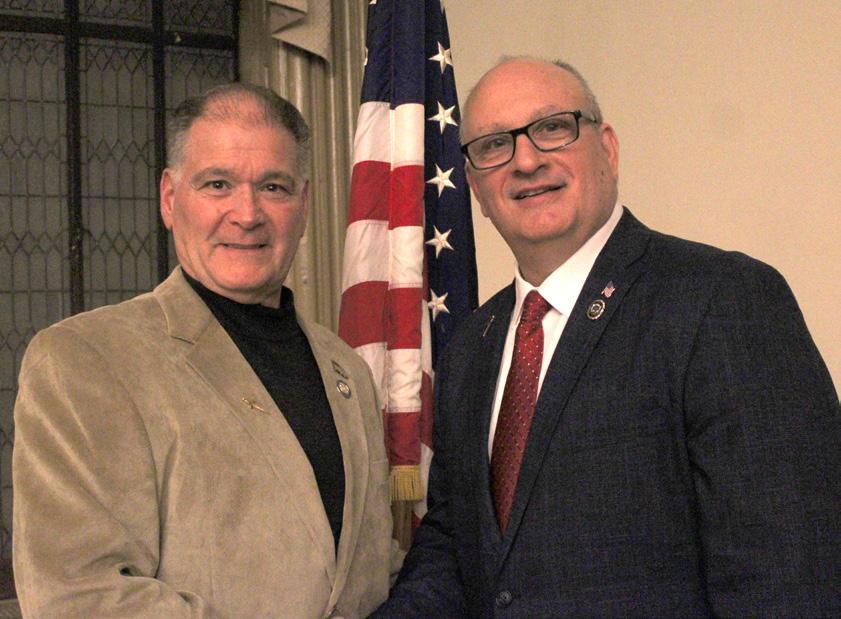
“Those businesses and corporations do not come to a municipality where they know they’re going to fail,” said Wehrheim. “We will continue to invest in this town and we will continue to make Smithtown the greatest town anywhere in New York State to live, work, and raise a family.”
Wehrheim’s leadership and vision for the Town were heralded by Assemblyman Mike Fitzpatrick (R-St. James) and Senator Mario Mattera (R-St. James), with Fitzpatrick saying, “Under Supervisor Wehrheim’s leadership, Smithtown will not be a second-rate town.”
Superintendent of Highways Bob Murphy (R-St. James) (pictured right) was re-nominated for another four-year term after winning his first term in 2017. Murphy was praised for not only spearheading “major work” done over the last several years, but that Murphy himself is often onsite with the members of his team.
Murphy touted “road management,” a concept that has not been paralleled by the nine other Suffolk towns. Murphy said that the database not only allows for the collection of needs and information from the public, but the software allows him and his team to look at individual tiers, grades, and valuations of the 475 miles of road within the Town.
“My job would have been half as much if I didn’t have your eyes, your ears,” said Murphy to Wehrheim and the Council, thanking them for the communication streams that keep his department aware of public needs.
Town Clerk Tom McCarthy (R-Smithtown) (pictured right) was re-nominated for a full term as the “cover of the book” on Town government, as McCarthy himself analogized the job to The Messenger in his 2023 candidate spotlight.
“It’s easy to be a volunteer. It’s easy to throw stuff at a wall and see what happens,” said McCarthy of his team at Town Hall. “But it takes incredible courage, integrity, and intelligence to lead and to find solutions and to understand the risks.”
Two incumbent members of the Town Council were also renominated - Thomas McCarthy (R-Nissequogue) (pictured right) and Lynne Nowick (R-St. James).
“The people in this town need to be treated like they’re customers, not like they’re pains,” said McCarthy, first elected in 1997. “It took a



“We almost have enough money to put sewers in Smithtown,” said Kennedy, referencing multiple forms of revenue in the past several years towards the overall project, such as $20 million from Senator John Flanagan (R-East Northport) during his tenure in the State Senate and recent obtainment of $21.5 million. Kennedy also mentioned $6.5 million for the rebuilding of the Stump Pond dam in Blydenburgh Park, 80% of which she hopes will be reimbursed through FEMA.
“Hopefully, we’ll get much more done in that time,” said Kennedy of the final two years of her stint in the Legislature, should she be re-elected in November.
Finally, the committee moved to nominate Sal Formica (R-Commack) (pictured left with Mario Mattera) to fill the open seat of Legislator Trotta. Formica’s background in law enforcement extends to the NYPD where he built a career as a detective in Emergency Services.
“He’s going to be able to help the County Executive and the Legislature achieve what they need to do for all of Suffolk County, but more importantly for us here in Smithtown,” said Formica’s nominator, adding that he does not expect Formica to “throw out rhetoric,” behave like a “bully,” or “throw out falsities.”
Formica touted his thirty-six year residency of Commack, particularly volunteering for Little League, as his reason for preferring the Smithtown methodology.
“Whenever I went to Huntington for money to upgrade fields, the answer was always, ‘There’s no money in the budget,’” said Formica, as opposed to Smithtown, where, he says, “Every step gets done.”
“I wanted to continue giving back to my community and pushing forward the Smithtown vision. There wasn’t much of a vision prior to Supervisor Wehrheim. When they said the ‘Land of No,’ I know firsthand,” said Formica. “All of that has changed. I certainly believe in what this Board is doing and I want to make sure that I help advance whatever their mission is.”
Formica added that while the current Smithtown residency is mostly “on the back nine of the golf course,” the progress the town requires is for “our children and their children.”
Senator Mattera offered his endorsement of Formica after the meeting adjourned.
“He’s a leader, he’s a businessman; he knows the Town of Smithtown,” Mattera told The Messenger. “A leader not just as a police officer or a businessman, but as a husband and a father.”
Mattera said that while public safety will be a “number-one” priority and facet of a Legislator Formica, he’s confident that business acumen will help potential constituents of Formica’s.
“Him being a business owner, he knows what we need here [in Smithtown]. Working with Executive Ed Romaine (R-Center Moriches), Sal Formica is going to bring the money back to our district, especially for what we’ve been doing so far, such as sewering and building the proper projects. He knows the demographics of our township and I’m really proud to endorse Sal Formica for the Thirteenth Legislative District.”
With the 2025 Republican slate chosen in Smithtown, all eyes now turn to the campaign trail, with the GOP hoping to retain a full lock on all elected positions in the Town and hold the supermajority in the County Legislature.
By Drew Johnson
Elon Musk recently announced his intention to cut $1 trillion in federal spending through the new Department of Government Efficiency (DOGE). As the department looks for ways to trim waste, one program that deserves immediate attention is Medicare Advantage (MA).
This is the component of Medicare that allows seniors to opt-in and purchase privately run government-subsidized health plans. It’s a popular program that typically bundles medical, hospital, and drug coverage, often including extras like vision and dental. MA produces better health outcomes than traditional Medicare, making it a good deal for both patients and taxpayers.

And yet for all these benefits, the program sorely needs reform.
It currently wastes billions of dollars each year as a result of perverse incentives, inefficient procedures, and misguided policies. Rethinking the most dysfunctional aspects of MA could dramatically lower costs while improving quality of care.
One of the program’s most glaring inefficiencies concerns a practice known as “upcoding” or “over-coding.” This is when a health plan deliberately diagnoses patients with additional ailments in order to make them appear sicker, and thus riskier and more expensive to insure.
Misrepresenting a patient’s health may seem like the exact opposite of what an insurance provider is supposed to do. But for the company, increasing the number of diagnoses means more money from the federal government. That’s because, under current rules, the government reimburses plans more generously for patients with higher “risk scores.” In recent years, risk-score inflation has become rampant.
In 2021, for instance, patient risk scores in MA were 12.1% higher, on average, than for patients in traditional Medicare, according to analysis from the Medicare Payment Advisory Commission.
Fortunately, there are relatively straightforward ways to fix the problem. Currently, Medicare is required to reduce payments to MA insurance plans by at



least 5.9% to reflect differences in coding across different populations. By increasing this figure -- known as the “minimum risk reduction” -- to 8%, the government could remove the incentive for plans to overstate how sick patients are. According to an estimate from the Congressional Budget Office, this would save at least $47 billion over a seven-year period.
The government could reduce MA waste even more significantly by rethinking MA’s system of “quality bonuses.”
Right now, Medicare pays bonuses to MA plans that perform well on measures of customer satisfaction. Plans in certain urban areas are even eligible for “double bonuses.” The aim is to encourage the insurance providers to improve quality -- but that isn’t how the arrangement has worked out.
The bonus program has had only a questionable effect on plan quality while substantially driving up overall MA costs, according to an analysis by the Urban Institute. Meanwhile, the double-bonus payments have increased racial disparities in how Medicare funds are distributed. And none of this has improved patient care.
The Congressional Budget Office estimates that eliminating double bonuses alone would reduce MA spending by $18 billion over seven years. The office also looked at another, more technical reform, which would do away with so-called “benchmark increases” tied to quality bonuses and estimated the savings at more than $94 billion.
Add it all up, and ending MA quality bonuses could save taxpayers huge sums, with no negative impact on patients.
Medicare Advantage offers enormous value to seniors and should be preserved. But it deserves scrutiny from the new Department of Government Efficiency for ways to reduce waste. Reforming the program could put Musk well on the way to his savings goal.
Drew Johnson is a budget policy analyst and government watchdog who was the Trump-endorsed Republican nominee for Congress in Nevada’s Third congressional district in 2024. This piece originally ran in Townhall.



Students enrolled in psychology at Smithtown High School West were in a different “state” of mind when hypnotist David Lawrence visited on January 15. Since students learned about hypnosis from the class curriculum, it was only fitting that Mr. Lawrence successfully hypnotized several students who engaged in various activities on stage.
Hypnosis is a state of altered consciousness where a person is more open to suggestion and in a deeper state of relaxation.

Under the direction of Smithtown Elementary art teacher, Mrs. Kerim, the school cafeteria and hallways were turned into a “Winter Wonderland with a Valentine’s Twist” on Thursday, Febuary 6.
For several weeks, students had been working on two and three-dimensional artwork to put on display for family members to enjoy. Snowflakes, nutcrackers, snowmen and even Valentine’s Day owls decorated the walls.
“We saw student excitement for art grow each week as we were coming closer to the show,” shared school principal, Dr. Kakalos.
District Director of Fine Arts, Victoria Hartman, says the event really showcased what students in the district have to offer. “The Smithtown Elementary art show kicked off the season across the district and truly set the bar high,” Hartman exclaimed. “Everywhere I looked, parents were beaming with pride as they snapped photos of their children standing beside their incredible masterpieces. This event was a perfect reflection of our art program, giving us a glimpse into the joy and creativity happening in our classrooms.”
It’s OK This Time






Smithtown High School East National Honor Society students joined together to make Valentine’s Day cards for Veterans at the Long Island Veterans Home in Stony Brook.





Noelle Czuba, a third grader at Pines Elementary School in the Hauppauge School District, recently received Special Recognition in the prestigious New York State Art Teachers Association Youth Art Month Flag Design Contest.
Noelle’s original artwork was selected from a record-breaking 2,440 submissions, making this year’s contest the largest in its history. The theme of this year’s contest was “Healing Through Color,” and Noelle’s creative design stood out among many talented entries.
The district congratulates Noelle on this achievement.
By Matt Meduri
The American Civil War was undoubtedly the most tumultuous time in our nation’s history, second only to the Revolution. The decades-long debated issue of slavery reached a fever pitch when the South seceded to form the Confederate States of America, resulting in the bloodiest war in U.S. history. The Thirteenth, Fourteenth, and Fifteenth Amendments were produced as a result of the Confederacy’s defeat and paved the way for further civil rights thereafter.
The Thirteenth Amendment
Section 1 states, “Neither slavery nor involuntary servitude, except as a punishment for crime whereof the party shall have been duly convicted, shall exist within the United States, or any place subject to their jurisdiction.”
Section 2 gives Congress the power to enforce Section 1 through “appropriate legislation.”
President Abraham Lincoln’s (R-IL) Emancipation Proclamation became effective on January 1, 1863, declaring that the enslaved in Confederate-controlled areas were free. State action was used to abolish slavery at this point, with Texas becoming the last Confederate state to declare enforcement of the proclamation on June 19, 1865 - the basis for the federal holiday Juneteenth. Some exceptions in Delaware, Kentucky, and New Jersey persisted until December 1865.
Lincoln’s proclamation, however, would have been relatively toothless without constitutional basis. On April 8, 1864, the U.S. Senate passed an amendment to abolish slavery. After just one unsuccessful vote, the House followed on January 31, 1865. The Union - northern free states - swiftly ratified the Thirteenth Amendment, along with some border states until Lincoln’s assassination. Lincoln’s successor, President Andrew Johnson (D-TN) shepherded the full ratification among former Confederate states, which resulted in its full adoption by the end of 1865.
Only two Democratic Senators - Benjamin Harding and James Nesmith of Oregon - voted to approve the amendment in a 38-6 vote. The failed House was along party lines. As slavery became politically toxic, more Democratic lawmakers and machines endorsed an abolition amendment, including New York’s powerful political machine Tammany Hall. Some Democrats, however, argued that such an amendment would be unconstitutional on the grounds of preserving states’ rights and the concept of federalism.
A second House vote was called, the outcome being uncertain on both sides of the aisle. All Republicans (84), Independent Republicans (2), and Unconditional Unionists (16) supported the measure, along with fourteen lame-duck Democrats. The result was a final passage of 119-56, narrowly eclipsing the required twothirds vote of Congress.
The scene on the House floor in the immediate wake of the vote is claimed to have been extremely celebratory, with some members of the floor openly weeping, and black spectators cheering from the galleries.
The amendment was proposed to the states for ratification on February 1, 1865; twenty-seven of the thirty-six states at the time were required for ratification. Eighteen had done so by the end of the month, including from Virginia and Louisiana, whose postbellum state governments were controlled at least in-part by Reconstruction Republicans. The final states to ratify were Alabama, North Carolina, and Georgia in December 1865.
Although the ratification of a Constitutional amendment does not require a presidential signature, the Thirteenth Amendment became the first to don a president’s signature. The Twenty-Sixth Amendmentsigned by Richard Nixon (R-CA) in 1971 - is the only other

ratified amendment to be signed by a president.
The Thirteenth Amendment not only freed slaves, but nullified multiple pieces of legislation, including the Fugitive Slave Act, which stated that slaves who escaped into Union territory were not granted freedom. It also reorganized treaties with Native American reservations where slavery took place.
The largest reaction, however, was more negative. The Solid South eventually retook power after Reconstruction ended, ushering forms of discrimination, poll taxes, segregation, as well as crimes and other forms of intimidation.
The Fourteenth Amendment
Section 1 states that “all persons born or naturalized” in the U.S. are citizens of the U.S.
“No State shall make or enforce any law which shall abridge the privileges or immunities of citizens of the United States; nor shall any State deprive any person of life, liberty, or property, without due process of law; nor deny to any person within its jurisdiction the equal protection of the laws.”
Section 1 includes the Citizenship Clause, the Privileges or Immunities Clause, the Due Process Clause, and the Equal Protection Clause, while also broadly defining citizenship. The amendment also superseded Dred Scott V. Sanford (1857), a landmark Supreme Court case that found that Americans descended from African slaves could not be U.S. citizens.
Section 1 is often hotly contested, as some of the clauses therein have been found to subject to states’ jurisdictions, namely the application of the Equal Protection Clause to non-citizens.
Section 2 stipulates suffrage extended to white males, the only part of the Constitution to have ever explicitly discriminated on the basis of sex. Suffragette leaders Elizabeth Cady Stanton and Susan B. Anthony condemned the amendment, ultimately mounting their liberation platform that culminated with the ratification of the Nineteenth Amendment in 1920, allowing women the right to vote. The Fourteenth Amendment is said to have separated the separate civil rights movements for black citizens and women for decades.
Section 2 and the Thirteenth Amendment nullified the Three-Fifths Compromise, a section of law that discounted the number of representation for slave states by counting each slave as “three-fifths” of one vote. The move was done to compromise with the South out of fear of secession and war - which later occurredbut to dilute the South’s overall political power. That fear was resurrected with the new amendments. The original solution was to reduce a state’s House representation that used “race or color” as a basis to deny suffrage. This was opposed by the Radical Republicans, who poised that states could use criteria that, at face value, would be race-neutral, but still affect aspects of society like education and property ownership. The amendment was then changed to penalize any state in which suffrage was denied to any male over the age of twenty-one for any reason other than participation in a crime.
This column will seek to address the long-forgotten concept of civics and how it relates to American government in general, from the federal level to the local level. This column will explore Constitutional rights, the inner workings of government, the electoral process, and the obligations and privileges of citizens.
CreditMatt Meduri
Section 3 states that no person shall serve in elected capacity after having engaged in “insurrection or rebellion” against or “given aid or comfort” to enemies of the U.S. The handicap can be reversed by Congress in a two-thirds vote of each chamber.
Section 3 was used by the State of Colorado to bar Donald Trump (R-FL) from seeking office, saying that the January 6, 2021, Capitol Riot fits the constitutional definition of “insurrection.” However, the U.S. Supreme Court decided unanimously that one state does not have the authority to determine eligibility, a power conferred exclusively to the federal government. The courts can only enforce Section 3 in this way with explicit permission from Congress.
Section 4 states that the U.S., nor any state, shall “assume or pay any debt or obligation incurred in aid of insurrection or rebellion” against the U.S, as well as claims for loss or emancipation of slaves.
Unlike the Thirteenth Amendment, the Fourteenth has been subject to fierce legal debate over the years, but has also been credited with establishing precedent for landmark civil rights cases over the next century-anda-half, such as Brown V. Board of Education (1954) - racial segregation, particularly in schools - Loving V. Virginia (1967) - interracial marriage - Roe V. Wade (1973)abortion, overturned in 2022 - Bush V. Gore (2000) - the 2000 presidential election - and Obergefell V. Hodges (2015) - same-sex marriage.
The sections were largely debated in Congress before being adopted in June 1866, with many black Republicans expressing disappointment that the amendment did not go so far as to guarantee political rights for blacks, an issue that would be addressed by the Fifteenth Amendment.
Most states ratified the amendment within the several years after its passage in Congress, with some states not formally ratifying it until much later, such as California and Maryland in 1959 and Kentucky in 1976.
Fifteenth Amendment
“The right of citizens of the United States to vote shall not be denied or abridged by the United States or by any State on account of race, color, or previous condition of servitude,” reads Section 1.
When President Ulysses Grant (R-OH), became president in 1868, the Republican Party understood that protection of the franchise of black Americans became paramount to their political success. After other measures that included sweeping reforms were rejected, Republicans’ compromise amendment banned franchise restrictions on the basis of race, color, or previous servitude. The amendment was opposed by Democrats, but fully ratified on March 30, 1870. In the House, 144 Republicans supported it with no Democrats in favor. In the Senate, thirty-three Republicans backed it with no Democrats joining them. The amendment allowed for states to create their own equal voter qualifications for all races.
The amendment’s true scope would be debated for decades after its passage, as Democrats retook control of Southern state governments, in some cases by fraud, to implement discriminatory practices, such as poll taxes, literacy tests, and forms of suppression and intimidation. Grandfather clauses were extended to poor whites, allowing them to preserve their suffrage, but the postReconstruction policies affected many poor whites.
Debate came to a head after the 1876 election, in which Democrats allowed Rutherford B. Hayes (R-OH) the White House on the condition that the Union Republicans end their effective occupation of the South. Hayes did not enforce federal civil rights statutes in the South during his presidency.
By Cait Crudden
Earlier this month, Suffolk County Legislator
Leslie Kennedy (R-Nesconset) met with nursing students from Farmingdale State College for an engaging discussion about the evolving field of nursing and its intersection with public policy. A nurse for thirty years before transitioning into public service, Legislator Kennedy has remained committed to staying informed about the latest medical advancements and fostering connections with healthcare professionals.
The meeting, organized by Mary Harwood, MSN, an adjunct nursing professor at Farmingdale and former colleague of Kennedy at Mather Hospital in Port Jefferson, provided students with a unique opportunity to hear firsthand about the intersections between nursing, public health, and legislative work.

The conversation covered a wide range of topics, including how nursing has evolved since Kennedy began her career, the introduction of new regulations, and the role of a legislator in shaping healthcare policy. Students were eager to hear about the changes in medical practices and patient care over the years, as well as Kennedy’s insights into navigating the challenges that come with both professions.
One of the most impactful topics discussed was the primary public health challenges facing Suffolk County. While many students expected substance abuse to be the most pressing concern, Kennedy surprised them by highlighting food insecurity as a major issue. She explained that hunger remains a significant problem in many communities, which is why she has prioritized working with organizations such as Island Harvest and Long Island Cares to ensure residents have access to nutritious meals.
Kennedy also reflected on the unexpected similarities between nursing and her current role in government.
“Like nursing, being a legislator has its ups and downs, its good days and bad days.
But at the end of the day, the purpose of the job is to care for people,” said Kennedy. Her words resonated with the students, who saw parallels between their future roles as nurses and the responsibilities that come with public service. Kennedy emphasized that both professions require a strong sense of compassion, critical thinking, and dedication to helping others.
Throughout the meeting, Kennedy shared anecdotes from her years in nursing and policymaking, leaving a lasting impression on the students. As the discussion neared its end, she turned the tables and asked the students what they enjoyed most about nursing school and the field of nursing itself.
One student, Malaika Louis, responded with a sentiment that deeply moved the legislator: “Where life takes you, the lessons from nursing school will follow. You may think you’ll forget, but you won’t. Caring, critical thinking, and compassion become second nature.” Kennedy nodded in agreement, acknowledging that her background in nursing continues to influence her approach to governance and decision-making.
The meeting served as a meaningful exchange between a seasoned healthcare professional-turned-legislator and aspiring nurses eager to make their mark in the field. By engaging with students and sharing her experiences, Kennedy hopes to inspire the next generation of healthcare professionals while ensuring that public health remains a legislative priority in Suffolk County.
As the conversation concluded, Kennedy encouraged students to stay engaged in healthcare policy and to recognize the power they hold in shaping the future of nursing. With a wealth of experience in both healthcare and government, she remains a steadfast advocate for improving the well-being of Suffolk County residents through thoughtful legislation and community collaboration.
By Cait Crudden
The Smithtown Town Board has taken a decisive step in the fight against opioid addiction by unanimously approving the creation of an Opioid and Addiction Task Force. The initiative, passed during the February 4 Town Board meeting, aims to combat the growing substance use crisis through a comprehensive approach focused on education, prevention, and community support.
Supervisor Ed Wehrheim (R-Kings Park) emphasized the town’s commitment to addressing the crisis head-on, stressing the need for accountability and reducing the stigma surrounding addiction.
“We cannot turn a blind eye to the opioid crisis, mental health struggles, and substance abuse that impact our community. Furthermore, we must also hold those liable for this crisis accountable,” said Wehrheim. “The stigma surrounding addiction often creates a sense of shame and judgment that prevents individuals from seeking the help they desperately need. We all know someone, a friend, a family member, coworker, or a neighbor, who has been affected by this crisis. It is our responsibility to foster a culture of compassion, understanding, and support. Everyone deserves a chance at living a healthy, rewarding life, and together, we can break down barriers to recovery and build a stronger, healthier community.”
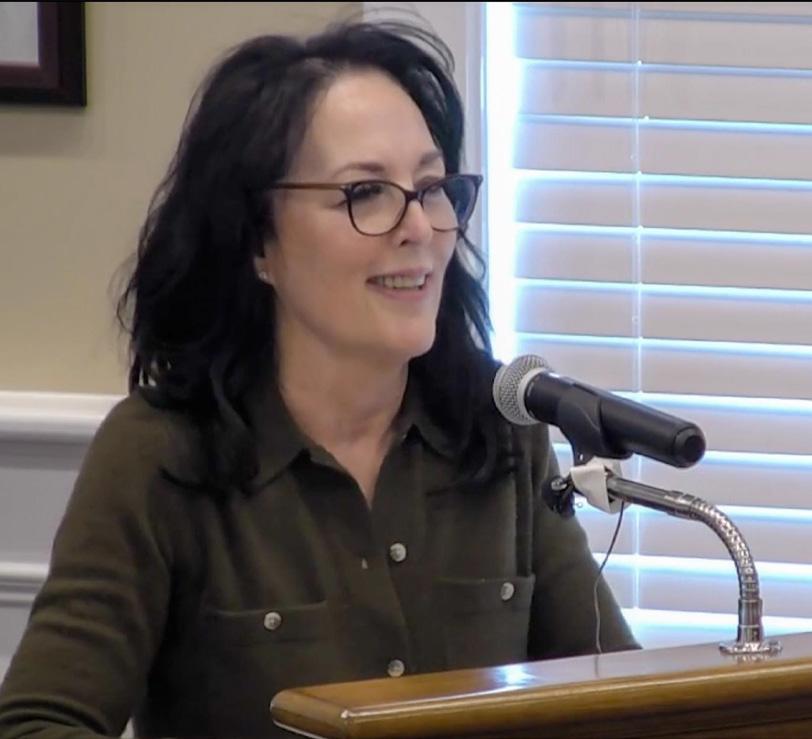
The task force will include local leaders, first responders, medical professionals, and key community members who will spearhead initiatives focused on education, resource accessibility, and stigma reduction. One of its core missions is to inform the community about prevention strategies, available treatment options, and the realities of substance use disorders.
“The formation of the new Smithtown anti-drug and opiate task force represents a critical step in our fight against substance abuse. By bringing together law enforcement, healthcare professionals, and community leaders, we are committed to preventing addiction, providing support for those in recovery, and holding those who fuel this crisis accountable. Together, we will work toward a safer, healthier future for our community,” said Madlyn Makboulian, Director of Horizons Counseling and Education Center.
The task force is a response to the increasing need for a collaborative approach to addiction and mental health challenges. Supported by local officials, including New York State Senator Mario Mattera (R-St. James), Horizons Counseling and Education Center, law enforcement, and healthcare professionals, the initiative aims to provide crucial resources and education to the public. Community advocates Susan Buroker and Madlyn Makboulian, Director of Horizons, were instrumental in developing the concept.
“After meeting Susan Buroker and her team in my office, I knew Supervisor Wehrheim and the Town Board would take immediate action to help protect Smithtown residents,” said Senator Mattera. “Along with his colleagues, Supervisor Wehrheim quickly put the issue on their agenda to help raise awareness and save lives. This, along with their decision to ban legal cannabis dispensaries, shows their commitment to protecting our residents from drug abuse. That is greatly appreciated, and I look forward to continuing to work with all involved to increase the conversation around this somewhat whispered topic.”
A major focus of the task force will be on community engagement. The town has already planned its first major event, a Community Awareness Day, scheduled for May 17, 2025, in partnership with Horizons Counseling and Education Center. The event will offer Narcan training, a Prescription Medication Disposal (Give-Back Initiative), and expert guest speakers. Numerous organizations, including Phoenix House, Thrive, Long Island Center for Recovery, St. Catherine’s Hospital, and Sun River Detox, will participate, providing critical resources and support services for attendees.
Community advocate Susan Buroker highlighted the importance of collective action. “Together as a community we created this task force because addiction isn’t just an individual struggle- it affects us all. Through awareness, support, and conversation we can create real change together,” said Buroker.
The Smithtown Opioid and Addiction Task Force is the result of dedicated efforts by local advocates and professionals. Buroker, Supervisor Wehrheim, Senator Mattera, Makboulian, and other community members collaborated to present a proactive strategy to the Town Board, ensuring the issue received the urgent attention it deserved.
As the task force begins its work, Smithtown is setting a strong example for community-driven solutions to the opioid crisis. By fostering collaboration between law enforcement, healthcare providers, and support organizations, the initiative aims to create lasting change in the fight against substance use disorders.
Thursday, February 20, 2025
By Ellyn Okvist, B.Sc.
“The roots of Gatelot go deep.”
The predecessors of Gatelot are as follows: In 1795, New York State Legislature passed an act permitting elementary school buildings. In 1812, the first public school in Lake Ronkonkoma was built at Five Corners, originally called the Lakeville School, then the Lake Grove School. On November 3, 1813, the Lake Ronkonkoma Union Free District was formed. In 1859, a two-room schoolhouse was constructed at the same site, and staffed by two teachers, grades one through eight.
In 1912, a new four-room schoolhouse was built on School Street and Hawkins Avenue and became the Lake Ronkonkoma School (pictured top right) The school served the community in many ways. It displayed the WWI Memorial Rock, proclaimed on November 11, 1923. The early dental and physician referral in the 1920s; the cocoa and soup program led by Mr. Fish; Boy Scouts and Girl Scouts meetings held in the building; PTA Meetings and Community planning took their roots behind the school’s doors. A certain student went on to lead the world with the U.S. Army - Lieutenant General David Grange (pictured below left), shown in photo from 1936 at the original LR School (pictured right)



On January 4, 1946, the school was destroyed by an arson fire. The students were bused to other schools, and for two years had lived through the adjustments and waited for a new school.
Records show that on October 11, 1932, a discussion was held at a PTA meeting of the Lake Ronkonkoma School realizing the need for a high school. This meeting agenda, memorialized in the minutes, was the first official discussion of a high school and district.
In 1947-1948, the new Lake Ronkonkoma School (later known as Gatelot Avenue School) was built, and dedicated on November 17, 1948.

Architect Daniel Perry introduced tremendous innovations into the school building - “design follows function” - including single-loaded corridors with extensive window areas affording fine views of the outdoor scenery. The primary grade classrooms were self-contained, each with their own bathroom and running water, and a space for coats, hats, and book bags. Each primary grade classroom had its own exit for easy access to the playground. In the hallway, between the six classrooms, he designed glass displays where students exhibited work that could be shared with all who walked the lengthy eleven-foot-wide corridors. Lake Ronkonkoma School was also unique in that it was the first elementary school to be built on Long Island after WWII. Steel was scarce after the war, which explains the all-wood construction. The original building included the main cafeteria and gym and had a cost of $355,000.
The dedication on November 17, 1948, thanked the members of the district, who had made this happen. Included were:
Philip Hans, President; Francis Hugelmeyer, Clerk; John Palmer; Charles Seibert; Seymour Singer from the Board of Education; Walter Dunham, Principal; Walter Ormsey, District Superintendent of Schools; Harold Sorenson, Counsel; Elsie Okvist, Treasurer; Daniel Perry, Architect; Lowe Construction Co., Inc.
Their hard work is still the basis of our Sachem CSD #5, with Gatelot Avenue School the historic backbone which set the tone for the future.
All who have passed through the Sachem doors and have been taught by the brightest and best educators realize, without a doubt, that we were special. Never did the district, led by Walter Dunham, let us go without basic needs; the budget prepared flawlessly to perhaps add additional services or schools. Sports, clubs, the radio station, all began with careful planning and considerations only for the students. Everything was based on the students and their future.
November 24, 2015, brought the Proclamation of the Fourteenth Historic Landmark of Lake Ronkonkoma, proclaimed by the Lake Ronkonkoma Heritage Association, which was held at a wellprepared and executed event that included faculty, staff, students, and administration. The ceremony included: The Fifteen-Star Flag explanation to bring us back to 1813 by Ellyn Okvist with the help of ALL students of Gatelot; an Algonquin Poem read by student Olivia Garafola; the Pledge of Allegiance with Tyler Berkowitz and Chaz Panicci; musical selections including “The Gatelot Song” by Chrie Lehmann, Gatelot Music teacher; students sharing their own writings- Delaney Ortiz, Sara Breitenbecker, Quinn Crescenzo; proclamation of the Historic Landmark by Ellyn Okvist; a few words from Victoria Ryder, Gatelot Avenue PTA President; Denis Kleinman, Principal; James Nolan, Superintendent Sachem CSD; thenCongressman Lee Zeldin (R-Shirley) with student Jacqueline Kohn; then-Governor Andrew Cuomo (D) by then-Presiding Officer Wayne Horsley (D-Babylon), Regional Director LI Parks; thenSenator Thomas Croci (R-Sayville) by Mr. Sal Nicosia; then-Assemblymen Al Graf (R-Holbrook); then-Suffolk County Executive Steven Bellone (D-West Babylon) with student Dylan Berkowitz; then-Suffolk County Legislator Tom Muratore (R-Ronkonkoma); Suffolk County Legislator Leslie Kennedy (R-Nesconset) with student Zach Viola; then-Brookhaven Town Councilman Kevin LaValle (R-Selden); Brookhaven Town Councilman Neil Foley (R-Blue Point); and all were welcome from the audience to say a few words.
The Proclamation included special guests Richard Hermann Francesconi; Henry Barton, principal; a huge showing of past teachers, Sachem District staff members, past students and friends. What a joy it was to see so many hugging their cafeteria staff, janitors and all others that had meant so much to each other.
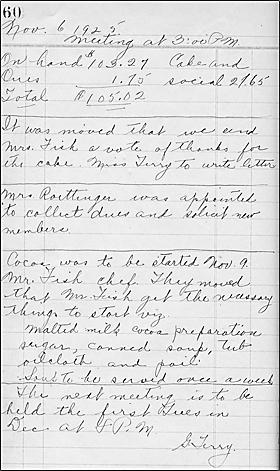
A few well-known traditions were discussed, such as the November 6, 1925, copy of the original journal of the LR School (pictured above), when the infamous “Mr. Fish and his cocoa” entry eventually began the soup-for-lunch program that went on for years and is a legend to this day. Mr. Fish prepared the soup himself.
The students climbing the flagpole was also a popular fad. Not many could complete the climb, but those who did still hold their place on record. The same flagpole still stands proudly in front of the school (pictured left).
Google Gatelot; it comes up for sale for $7,000,000.
THE LAKE RONKONKOMA HERITAGE ASSOCIATION 4 Cherry Street, Lake Ronkonkoma 631-831-1670
thelakeheritage@aol.com
Published by Messenger Papers, Inc.
By Mollie Barnett
The rapid advancement of artificial intelligence models is forcing a fundamental reassessment of corporate governance frameworks, as organizations navigate an increasingly complex landscape of citation standards, copyright requirements, and regulatory obligations. This transformation comes amid heightened scrutiny from regulators and shareholders, who are demanding more sophisticated approaches to AI risk management.
The Bias Challenge
One of the most significant challenges facing AI governance is the misconception of neutrality.
“AI inherits biases from its training data, and the goal isn’t to eliminate bias entirely but to align with desired values,” explains Dr. Yash Charurvedi, expert in machine learning and AI. “This dynamic creates particular challenges for policy frameworks, as the compounding effects of AI system growth continue to reshape these values.”
Standards in Flux
The evolving nature of AI standards stems from several key factors:
• Continuous innovation in algorithms and architectures
• Industry-specific requirements across healthcare, finance, and autonomous
vehicles
• Emerging ethical concerns regarding fairness and accountability
• Growing security threats requiring robust risk management protocols
Shadow AI and Implementation Hurdles
Organizations face a particular challenge in policy implementation: overly restrictive AI policies can lead to “Shadow AI”
- unauthorized use of AI tools by employees who are seeking more efficient solutions. This reality pushes companies toward more adaptable governance frameworks.
“Limiting your staff to subpar AI tools inevitably results in shadow usage,” notes Michael Cook, My AI Workshop. “The key is building flexible policies that evolve with the technology while maintaining security and compliance standards.”
Critical Framework Components
Successful AI governance frameworks typically encompass:
Model Requirements
• Documentation of approved AI models and their citation standards
• Clear content generation and attribution guidelines
• Regular capability assessment and
requirement updates
Compliance Structure
• Integration with existing regulatory systems
• Audit protocols and documentation standards
• Regular effectiveness assessments Training Programs
• Comprehensive staff education
• Model-specific requirements
• Real-time protocol updates for evolving standards
• Clear compliance escalation paths
Who Are the Market Leaders When It Comes to Implementation
There are a few organizations that research has uncovered as pioneers in AI governance. BlackRock, who boasts a framework that includes regular policy updates and mandatory training; and IBM, implemented sophisticated tracking systems for model requirements and compliance. These are hardly fair comparisons though. Both giant enterprises, that not only have the luxury of budgets that rival countries but also were afforded the technology years ahead.
As new models emerge and existing ones evolve, AI governance faces increasing complexity
Organizations must prepare for:

• Enhanced regulatory scrutiny and documentation requirements
• Growing emphasis on ethical AI usage
• Integration of AI governance with broader corporate strategy
The challenge for organizations will be maintaining innovation while ensuring compliance, security and ethics in a rapidly evolving technological landscape. Success will depend on building flexible governance frameworks that can adapt to changing requirements while maintaining robust oversight.
Mollie Barnett, a Microsoft-certified Generative AI expert and Forbes Communications Council member, brings twenty years of marketing leadership to AI transformation. She specializes in helping SMBs implement practical AI solutions for business, training, and integration, and provides strategic guidance on AI ethics, security and compliance.

By PJ Balzer
Imagine that you had an apple tree in your yard and that it was able to speak. Your speaking apple tree was placed right next to where you park your car, so every day you had to walk right by it. All winter, spring, and summer long, the apple tree loudly said to you, “I just wanted to remind you that I’m an apple tree. I will grow apples, apples that are healthy, delicious and nourishing! My roots are strong, and my branches are about to grow and produce. Just you wait and see how much of an apple tree I really am and the abundance of apples that I give you.”
Fast forward now to September, October, and November. It’s finally the season for apples and you obviously can’t wait to go and retrieve them. Your apple tree spent several months now hyping up these apples which would add to the excitement of the harvest. You may even have told family and friends to come pick these apples with you, based on what the tree said. The time has finally arrived; it’s autumn and the harvest is here. We’re going to have fresh apples, pies, cider, juices, caramel apples; apples galore and plenty to share.
As you approach the tree you can’t believe your eyes. On the branches of the apple tree that convinced you with its words, there’s no healthy apples hanging. You search the branches and can’t find one apple that is appealing to the eye or nourishing to the body. They are all rotten already, not to mention small, and the rest have worms already eating through them. All of the apple tree’s words didn’t amount to anything at all. Your apple basket is completely empty and you’re even questioning if this tree is an apple tree at all.
A tree isn’t known by its words; it’s known by its fruit.
In the modern-day Christian Church in America, we’ve made it all about the hype. Large signs, flashing lights, freshly painted buildings, and newly paved parking lots. We fill up large, expensive conference centers with people who are excited to see the latest best-selling author. We are high on hype, everyone is, because the tree has been telling us daily to get excited for its coming apples.

While there certainly isn’t anything wrong with being excited or the building looking tidy and presentable, the whole point of it all is the apples, the good fruits being produced in us and through us. All the outside hype should be with the goal in mind to challenge us, change us, and turn our hearts into such a healthy apple tree that many are being nourished through our words, deeds, and our character as a whole. Certainly not perfect character, but good, nonetheless. Can people who are hungry spiritually, physically, and emotionally come to find nourishment at this tree? Can someone walk in right off the street and tell immediately that this is as healthy an apple tree as the huge sign says outside? Can someone who doesn’t speak the same language as the people inside yet knows something about fruit trees, simply look at the tree’s branches and see how healthy they are spiritually?
Can the poor find sustenance in this tree? Can children who are abused, outcasted, and damaged find safety in its branches? Can people who don’t fit our agenda or clean up nicely enough to enter the fancy conference center? Can they sit in the tree’s shade and find a place to rest for a moment? Is the lonely traveler, the vagabond welcome to pick from this tree? Is Jesus truly the one tending to this tree? Pruning, watering, nourishing, and growing it as only He can? Or is there a different gardener at work that has yet to produce any good fruit?
Will there be good fruit on this apple tree when the time for harvest comes?
But the fruit of the Spirit is love, joy, peace, longsuffering, kindness, goodness, faithfulness, gentleness, self-control. Against such there is no law.
- Galatians 5:22-23




Published by Messenger Papers, Inc.
By Betsy McCaughey | AMAC Outside Contributor
New York is already getting sued by the Trump administration for prioritizing illegal aliens over the safety of Americans. Get ready for New York City to be slammed with similar suits.
New York Gov. Kathy Hochul blusters that the legal action is a “worthless, publicitydriven lawsuit” that will “be a total failure.” Hochul insists “New York is not backing down.”
She’s dead wrong about the merits of the lawsuit. It’s a slam dunk.
The state and its top Democrats are being sued over the Green Light Law, a brainchild of New York Attorney General Letitia James and former Gov. Andrew Cuomo. It was passed and signed into law by Cuomo in 2019 to allow illegal immigrants to get driver’s licenses without having to worry that their information could be accessed by Immigration and Customs Enforcement. The law prohibits federal law enforcement from using the Department of Motor Vehicles database to see an individual’s picture, address, or immigration status unless they get a warrant or court order, a timeconsuming process. It’s impossible during a traffic stop, for example.
Here’s the biggest outrage: The Green Light Law says DMV employees “shall” tip off anyone under investigation within three days — giving them a heads-up to abscond. Nineteen states allow illegal immigrants to get driver’s licenses, but no other state law has this tip-off provision. It turns the DMV into an accomplice for criminals.
Announcing the lawsuit on Feb. 12, newly minted U.S. Attorney General Pam Bondi stood with an “angel mom” whose daughter had been raped and murdered by an MS13 gang member. Bondi accused the state of deliberately obstructing federal efforts to round up and deport illegals with criminal records or arrests, in violation of the U.S. Constitution’s supremacy clause and a new federal law.
On Jan. 29, President Donald Trump signed into law the Laken Riley Act, which mandates that any illegal alien convicted of theft, burglary, or crimes that cause death or bodily injury will be detained and deported on release from prison. That can only happen if ICE knows the criminal is being released.
“At last count, we had almost 600,000 illegal aliens in the United States with a criminal conviction. I won’t be happy” until they’re removed, said border czar Tom Homan on Monday.
That’s where Bondi comes in. On Feb. 6, she sued the city of Chicago, Cook County, and the state of Illinois for “affirmatively thwarting” the enforcement of federal immigration law, resulting in “countless criminals being released into Chicago” who should have been removed from the United States. She cited local and state laws that make it a crime for government employees to share information with ICE.
A long line of Supreme Court litigation says that the federal government cannot “commandeer” state and local employees to do the feds’ jobs for them. She will have to prove that local and state authorities are not just sitting on their hands. They are actively working to defeat federal law.
New York City will likely face a similar lawsuit if Homan isn’t happy with the cooperation he’s been promised by Mayor
Eric Adams. And it’s unlikely that Adams can deliver. On Feb. 13, Homan told me Adams promised not only to provide an ICE “presence” at Rikers Island but to do other things that he can’t make public because the City Council would object.
Give the mayor a medal. He’s being pilloried by his own party for playing ball with the Trump administration on immigration enforcement. But public sentiment is fully behind him. Nearly 72% of New York City residents polled by the Manhattan Institute want the city to cooperate with federal officials to deport illegals who have committed crimes.
ICE says there are over 58,000 illegal migrants wandering city streets who are convicted felons or face criminal charges.
Overview - AMAC -
The Association of Mature American Citizens
The Association of Mature American Citizens represents Americans 50 plus. AMAC is centered on American values, freedom of the individual, free speech, and exercise of religion, equality of opportunity, sanctity of life, rule of law, and love of family, with benefits at all levels.
AMAC plays a vital role in helping build the services that will enrich the lives of America’s seniors. AMAC Action, a 501 (C)(4) advocates for issues important to AMAC’s membership on Capitol Hill and locally through grassroots activism. To Learn more, visit amac.us
Yet New York Democrats are battling to protect them. Rep. Alexandra Ocasio-Cortez’s office held a webinar on how to evade ICE. City Council members are introducing legislation to allow New Yorkers to sue any city agency that cooperates with ICE. And Albany lawmakers are offering legislation to bar ICE from schools or shelters without a court order.
It’s madness. The public loses safety, and the state and cash-strapped city potentially lose billions in federal funds by warring against the White House.
New York is not a sovereign nation. It is part of the United States and needs to behave that way, obeying the U.S. Constitution.
Bondi delivered that message in court. Voters need to deliver it at the ballot box.

Mar 13–Apr 27, 2025 ON STAGE UP NEXT May 15–Jun 29, 2025







Jul 10–Aug 24, 2025
Etymology:
late 15th century: from Latin sacrosanctus, from sacro ‘by a sacred rite’ (ablative of sacrum) + sanctus ‘holy’.
adjective Pronounced: sa·krow·sangkt
Definition: (especially of a principle, place, or routine) regarded as too important or valuable to be interfered with.
Example: “The impartiality of the courts should be considered as sacrosanct.”
Synonyms: hallowed, inalienable, set apart Antonyms: desecrated, blighted, partial Source: Oxford Languages


O H Y A T R
See how many words you can create. Must have center letter in word and can use letters more than once. 4 letter word minimum.


See bottom left for the answers (please don’t cheat!)

February 20, 1792: U.S. postal service created, postage 6 to 12 cents depending on distance.

February 21, 1972: Richard Nixon becomes the first US President to visit China, normalizing relations between the countries in a meeting with Chinese leader Mao Zedong in Beijing
February 26, 1917: First jazz records recorded - “Dixie Jazz Band One Step” and “Livery Stable Blues” by Original Dixieland Jass Band for the Victor Talking Machine Company in NYC.
February 22, 1888:
“Father of American Golf” John Reid first demonstrates golf on a Yonkers cow pasture to friends.

February 23, 1904: United States acquires control of the Panama Canal Zone for $10 million.


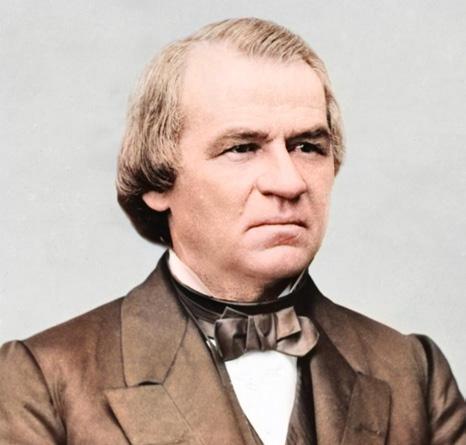
February 24, 1868:
U.S. House of Representatives vote 126 to 47 to impeach President Andrew Johnson.
February 25, 1862: First Legal Tender Act 1862 is passed by the US Congress, authorizing the United States note (greenback) into circulation, the first fiat paper money that was legal tender in America.
By Raheem Soto
Suffolk County has been home to plenty of remarkable people over the years. Still, few can match the grit, determination, and patriotism of Dr. Olivia Hooker. A longtime Brentwood resident, she didn’t just make history—she redefined what was possible for Black Americans, women, and anyone who refuses to let adversity stand in their way.
Dr. Hooker lived through some of the darkest moments in American history, but she never let them define her. Instead, she used them as fuel to carve a path forward for herself and future generations. A survivor, a trailblazer, and a proud American, she left behind a legacy that deserves to be remembered, especially during Black History Month.
Born in 1915 in Muskogee, Oklahoma, Olivia Hooker had a childhood that started off just like any other. Her father owned a clothing store, and her family was part of the thriving Black community in nearby Tulsa. That all changed in 1921 when racial tensions exploded into what we now know as the Tulsa Race Massacre.
Hooker was just six years old when an angry white mob burned down her family’s home and destroyed her father’s business, along with much of the prosperous black neighborhood known as “Black Wall Street.” It was one of the worst acts of racial violence in American history. For many, it would have been enough to instill fear, resentment, or even defeat.
But not for Olivia Hooker.

obstacles.
In 2015, at the age of 100, she received one of the highest honors of her life—President Barack Obama (D-IL) personally recognized her contributions to the country during a White House ceremony. “Dr. Olivia Hooker has lived an extraordinary life,” he said, praising her resilience, patriotism, and groundbreaking achievements.
She passed away in 2018 at the age of 103, leaving behind a legacy that stretches far beyond Suffolk County.
Olivia Hooker’s life is a reminder of what makes America great—the ability to overcome, to push forward, and to never let obstacles dictate your future. She didn’t let racism, rejection, or even one of the worst massacres in American history hold her back. She believed in this country enough to serve it, educate its future leaders, and fight for justice in a productive and lasting way.
At a time when so many stories focus on division and resentment, Hooker’s life is a lesson in perseverance and unity. She never made excuses. She never played the victim. She simply worked harder, pushed further, and left this world better than she found it.
As we honor Black History Month, her story is worth telling—not just for the history books but for the lessons it offers us today.
Because in the end, Olivia Hooker wasn’t just a trailblazer for black history. She was an American hero.
Instead of dwelling on hatred, she focused on strength. Her mother, she later recalled, refused to let the tragedy define them. “She said, ‘Don’t spend your time agonizing over the past. Don’t let that stop you from moving forward,’” Hooker once shared. That lesson stuck with her for life.
Hooker’s determination carried her through school and eventually to college, where she earned a degree in education. But by the 1940s, she had her sights set on something bigger—serving her country.
During World War II, the military was still largely segregated, and opportunities for black women were almost nonexistent. That didn’t stop Hooker from applying to the U.S. Navy’s WAVES (Women Accepted for Volunteer Emergency Service) program. They turned her down.
Again, she refused to quit.
In 1945, she applied to the U.S. Coast Guard Women’s Reserve, known as SPARS. This time, she was accepted, making history as the first black woman to serve in the Coast Guard.
At a time when many women were still expected to stay home and raise families, Hooker put on her uniform and got to work. She spent her service stationed in Boston, handling administrative duties and helping the war effort in whatever way she could. It may not have been combat, but it was a vital role— and it opened the door for more Black women to serve in the military.
Hooker didn’t stop there. After the war, she used the GI Bill to further her education, earning a master’s degree from Columbia University and eventually a Ph.D. in psychology.
While many people would have considered breaking military barriers enough of an achievement for one lifetime, Hooker was just getting started.
She became a respected psychologist, dedicating her career to helping children with developmental disabilities. For decades, she worked as a professor at Fordham University, mentoring students and advocating for better support systems for people with disabilities.
But she never forgot her roots—or the struggles she had overcome.
She became an outspoken advocate for the survivors of the Tulsa Race Massacre, ensuring that history wouldn’t forget what happened to Black Wall Street. In her later years, she worked with organizations like the NAACP. She continued pushing for justice long after many of her fellow survivors had passed on.
Eventually, Hooker settled in Brentwood, where she became a pillar of the community. Even in her 90s, she remained active, speaking at events, sharing her story, and inspiring young people to chase their dreams, no matter the

By Cindi Sansone-Braff
EastLine Theatre’s latest production, “An Enemy of the People,” proves the prophetic words of the esteemed Nineteenth-Century Norwegian playwright Henrik Ibsen still have a powerful impact on Twenty-First-Century audiences. Ibsen’s lyrical, symbolic, and poetic canon of plays, which include classics such as “Peer Gynt,” “Ghosts,” “A Doll’s House,” “Hedda Gabler,” and “When We Dead Awaken,” are the most frequently performed plays in the world, second only to Shakespeare. The sad news is that you’re unlikely to see a production of any of his plays on Long Island. Thanks to the creative endeavors of EastLine Theatre, from now until February 23, 2025, you can catch one of Ibsen’s timeless masterpieces.
My college playwrighting textbook, Block and Shedd’s “Masters of Modern Drama,” opens with Henrik Ibsen’s plays and the lines “Modern drama begins with Ibsen.” The pioneer of theatrical realism, Ibsen was also the father of dramedy, plays that combine drama with elements of comedy.
Despite its serious subject matter, Ibsen’s “An Enemy of the People” is infused with humor. The plot revolves around a small-town doctorturned-whistleblower who discovers contaminated water in their local spa’s mineral baths. Ibsen based this plot on several real-life events, including a doctor who notified the guests at a health spa about a cholera breakout, causing them to leave the premises. Outraged by the loss of revenue, the community reacted by throwing
stones at the doctor’s house. This 1882 play is overflowing with thoughtprovoking themes that still pack a hefty punch; for instance, people placing self-interest above what is morally and ethically correct for others, the responsibility of individuals to speak up against injustice, and how easy it is for democracy to descend into mobocracy.
“An Enemy of the People” has been adapted countless times by playwrights, including Arthur Miller’s 1950 three-act version. Miller adapted this political satire as a way to confront the dangers of McCarthyism with its censorship aimed at silencing political dissenters. Amy Herzog’s recent two-act adaptation had a 2024



Broadway run featuring a blockbuster cast, including Jeremy Strong, Michael Imperioli, Katie Broad, Caleb Eberhardt, Matthew August Jeffers, David Patrick Kelly, Victoria Pedretti, Thomas Jay Ryan, and Alan Trong. Herzog also picked up the 2024 Drama Desk Award for Outstanding Adaptation.
Originally written as a five-act play, director and adaptor Paul DeFilippo streamlined EastLine Theatre’s production into a one-act, full-length play that retains the Nineteenthcentury drama’s comedic mood while amplifying the life-and-death stakes at hand. Adapting a play written by one of the most revered dramatists in history, DeFilippo had big shoes to fill. Still, his Twenty-First-Century adaptation stayed true to Ibsen’s intent of having a hopeful ending, whereas Arthur Miller’s Twentieth-Century brooding adaptation closed on a darker note with the line “…and the strong must learn to be lonely.”
It was a stroke of genius by DeFilippo, who also directed his adaptation, to place center stage two small, inground pools of water. These strategically placed bodies of water forced the actors to maneuver around precariously, serving as an apt metaphor for how many of the play’s characters ignore the lifethreatening elephant in the room, the contaminated mineral baths.
The tight-knit ensemble brought their A-game to this stellar production. John Torres gave a riveting performance as the protagonist, Dr. Thomas Stockmann. Torres, a charismatic actor, delivered his many humorous lines with expert timing. Steven Garry gave a nuanced performance as Peter Stockmann, Thomas’s older brother and the play’s duplicitous antagonist. Peter, a

stuffed shirt plagued by indigestion, is also the town’s calculating mayor and the baths committee’s chairman.
Elizabeth Rowe delivered a tour de force performance as Katherine Stockmann, Thomas’s loving, loyal, and trustworthy wife. Victoria Kay commanded the stage as the Stockmann’s headstrong and idealistic daughter, Petra, a disenchanted teacher. Petra also dates Hovstad, the editor of the local newspaper. Mauricio Gonzalez’s demonstrative body language and facial expressions brought depth to the character of Hovstad, a young man who claims to be a freethinker while caving into mob mentality. Tom Ciorciari gave an awardworthy performance as Aslaksen, the mild-mannered, non-confrontational, everything-in-moderation fanatic who happens to be the newspaper’s printer, the homeowner’s association chairman, and a Temperance Society member.
One of the show’s highlights was Matthew Rubenfeld’s spot-on portrayal of Captain Horster, a kind man who spends most of his time at sea and who knows little about life on the land; however, he proves to be a stalwart supporter of the Stockmann family.
EastLine Theatre presents this newly adapted classic in partnership with the Babylon Citizens Council on the Arts. Wendy Grimm and Lynn Adler designed the authentic period costumes, the outstanding lighting design was by Nicole Savin, and Paul DeFilippo composed the original music.
Ibsen’s plays have the uncanny ability to tap into the political pulse of the world, and DeFilippo’s astute adaptation reinforced Ibsen’s relevancy for today. “An Enemy of the People” is performed at the BACCA Arts Center, 149 North Wellwood Avenue in Lindenhurst and runs through February 23, 2025. Tickets are $25, and you can purchase them at EastLine.ludus.com. More information is available at EastLinetheatre.org or by calling 516-749-5047.
Cindi Sansone-Braff is an awardwinning playwright. She has a BFA in Theatre from UCONN and is a member of the Dramatists Guild. She is the author of “Grant Me a Higher Love,” “Why Good People Can’t Leave Bad Relationships,” and “Confessions of a Reluctant Long Island Psychic.” Her fulllength Music Drama, “Beethoven, The Man, The Myth, The Music,” is published by Next Stage Press. www.Grantmeahigherlove.com.
Published by Messenger Papers, Inc.
By Eric Ruark
Donald Trump (R-FL) won a convincing victory over Kamala Harris (D-CA) largely due to record support from black and Latino men. Trump won these votes because of, not in spite of, his immigration policies.
These predominantly working-class men intuitively understand that mass migration depresses their wages, increases competition for jobs and housing, and overburdens their local communities.
President Trump and Congress can deliver for these voters — and all working Americans — by reducing overall immigration levels. That means preventing illegal immigration and lowering annual legal admissions. Reducing legal immigration is exactly what another Republican president and Congress did a century ago — and it led to massive economic and political gains for black Americans.

The Immigration Act of 1924 signed into law by President Calvin Coolidge (R-MA) drastically reduced the number of foreign workers arriving on American shores. Annual immigration levels dropped nearly 60%, from 700,000 in 1924 to 295,000 in 1925. Over the next four decades, immigration averaged less than 200,000 per year.
As a result, factory owners and hiring managers had no other option but to hire black workers from the American South. After the law passed, roughly six million black Americans hit the rails and roads in a “Great Migration” northward to a chance for better jobs and greater wealth.
Between 1940 and 1980, Black men’s inflation-adjusted incomes expanded fourfold, nearly twice as fast as white men’s incomes. The number of middle-class black Americans more than tripled.
Contemporary black political and labor leaders recognized that mass immigration was hurting their economic interests.
“This country is suffering from immigrant indigestion,” pronounced A. Philip Randolph, the great black union leader. “It is time to call a halt on this grand rush for American gold, which over-floods the labor market, resulting in lowering the standard of living, race-riots, and general social degradation.”
This flood of competition explains why black leaders strongly supported the 1924 law. Just one year after it passed, Randolph’s The Messenger — the nationalcirculation, black labor unionist magazine — declared, “Immigration from Europe has been materially cut, which means that the yearly supply of labor is much less than it formerly was. This gives the organized workers an advantage, greater bargaining power by virtue of this limited supply.”
Five years after the legislation passed, W.E.B. DuBois wrote in Crisis magazine of the National Association for the Advancement of Colored People, “[T]he stopping of the importing of cheap White labor on any terms has been the economic salvation of American Black labor.”
The end of the Great Wave of European immigration allowed for the formation of the Black middle class. The resumption of mass immigration in the second half of the twentieth century has contributed to the diminution of the middle class, hitting Black Americans especially hard.
In 1965, Congress transformed the nation’s immigration laws. Unfortunately, the Hart-Celler Act unintentionally ushered in today’s era of mass migration. A second “Great Wave” has disproportionately impacted Black Americans by introducing competition for jobs, thus reducing both employment and wages.
There is ample evidence of the harm mass immigration has caused to Black Americans. Harvard economist George Borjas analyzed data from 1960 to 2000 and found that “a 10-percent immigrant-induced increase in the supply of a particular skill group reduced the black wage by 4.0 percent, lowered the employment rate of black men by 3.5 percentage points, and increased the incarceration rate of blacks by almost a full percentage point.”
President Trump ran on a promise to fix America’s broken immigration status quo. Working-class voters of all races gave him their votes. And their livelihoods depend on him keeping his word.
Eric Ruark is the Director of Research for NumbersUSA. This piece originally appeared in the Boston Herald.





“Lori’s knowledge of the market and her attention to detail are invaluable. Lori goes above and beyond to make the entire process of selling your home seamless and stress-free. If you are looking for an agent who is not only incredibly skilled and knowledgeable, but also kind, approachable and interested in your success, then Lori is the one to call.”






• Recognize when it’s the right time to downsize…
• Start early organizing and packing your belongings…
• Adopt the “One Year” rule for questionable items…
• Interview moving companies…
• Set a timeline…
• Sell or donate unwanted items……
• Design a labeling system…
• Focus on one room at a time…
• Consider your new space and lifestyle…


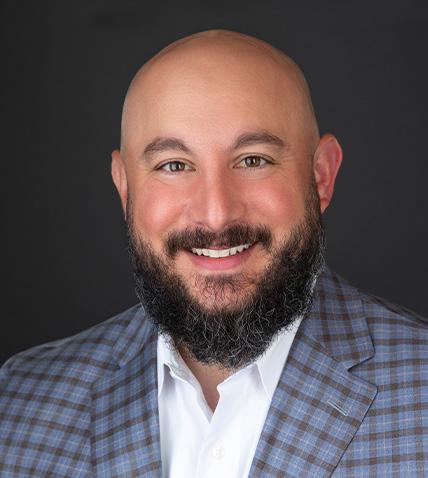
• Measure your furniture… Get settled into your new home and enjoy making new memories

